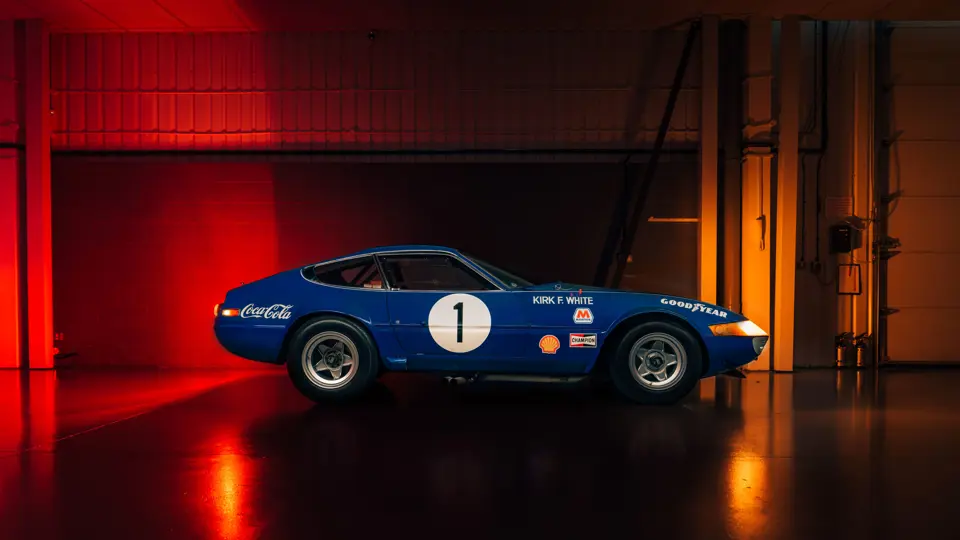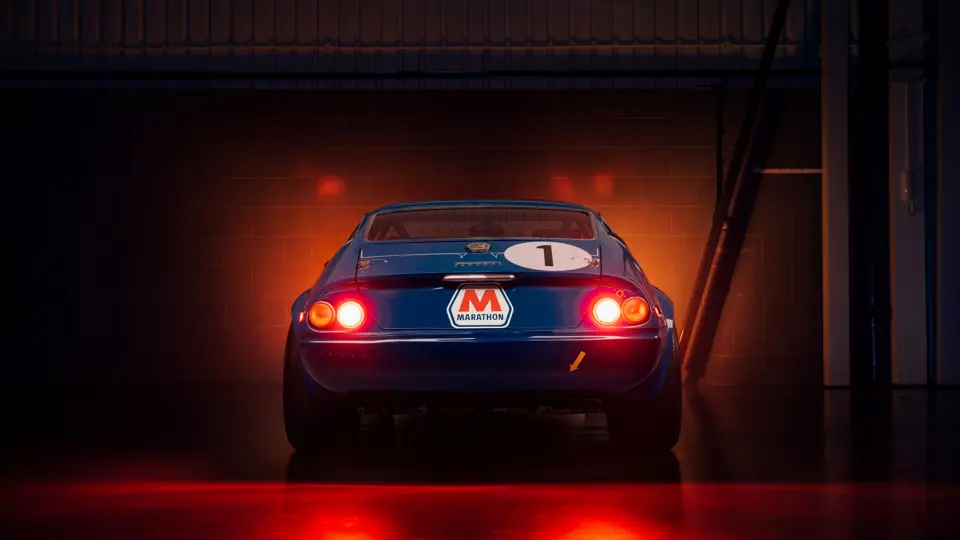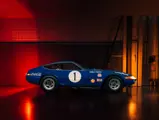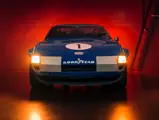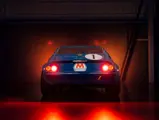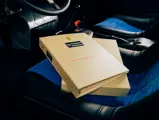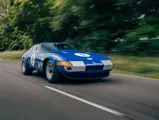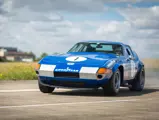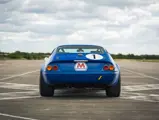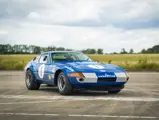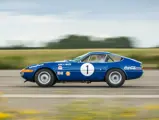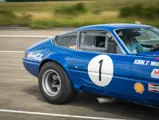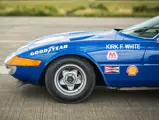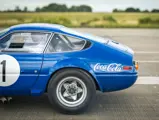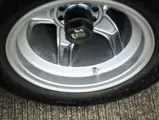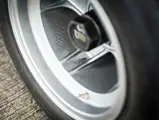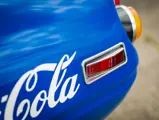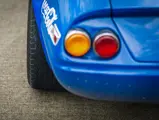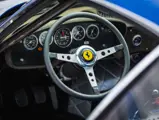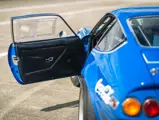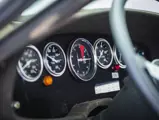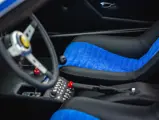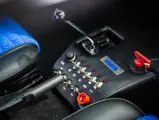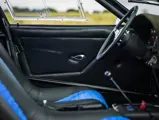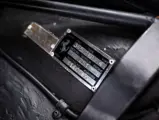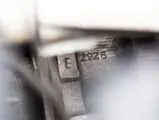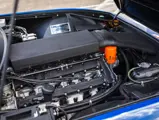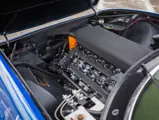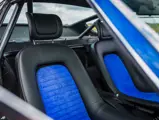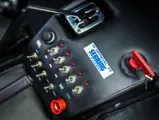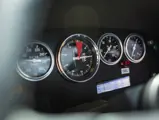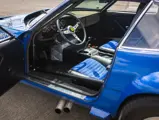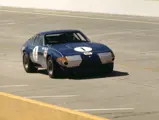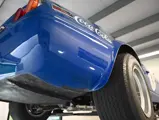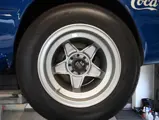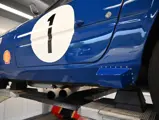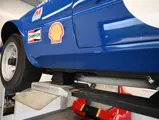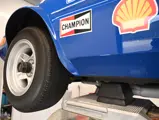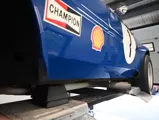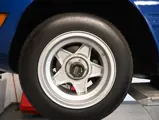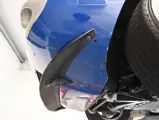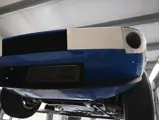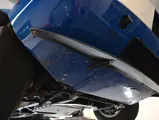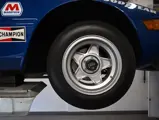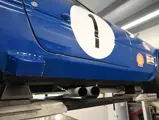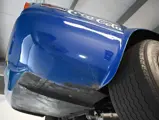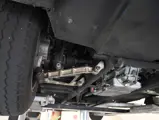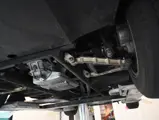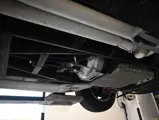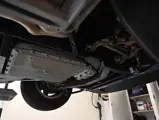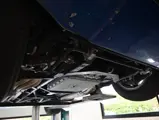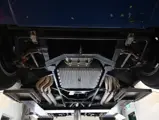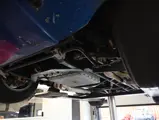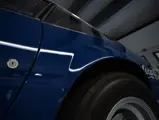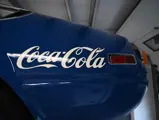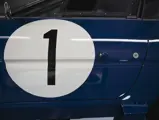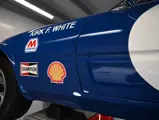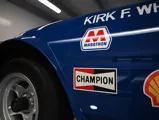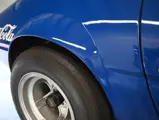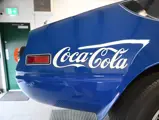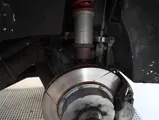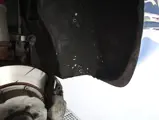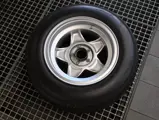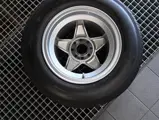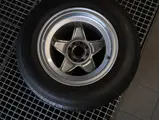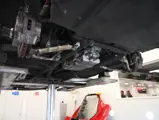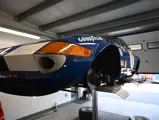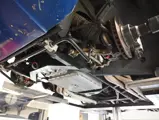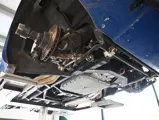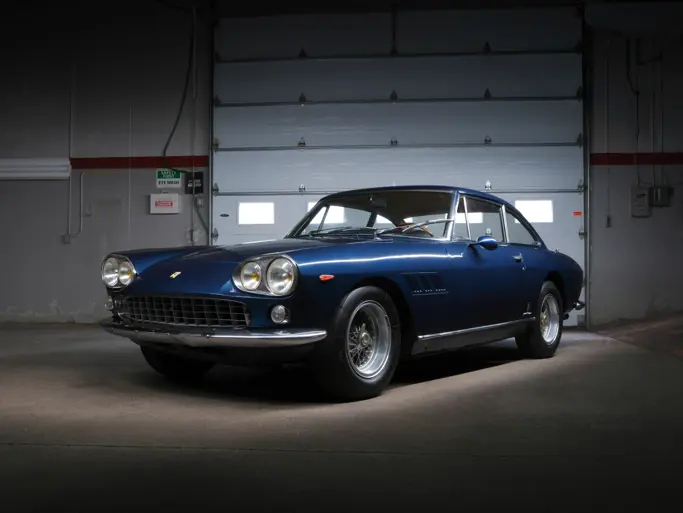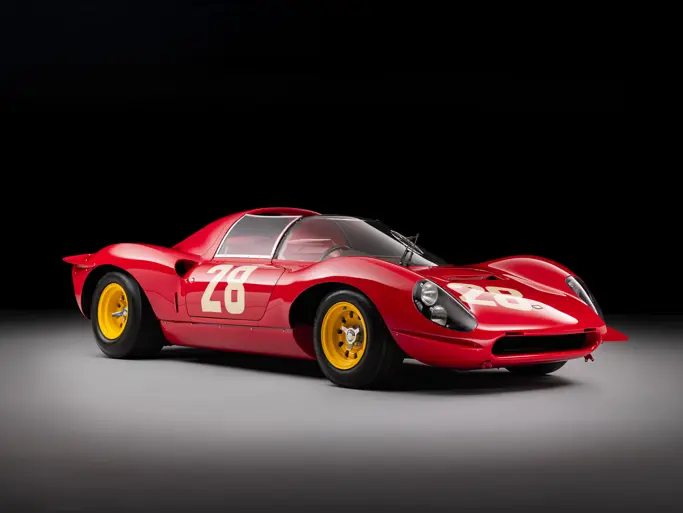
1971 Ferrari 365 GTB/4 Daytona Independent Competizione
{{lr.item.text}}
$2,250,000 - $2,750,000 USD | Not Sold
{{bidding.lot.reserveStatusFormatted}}
- Ferrari Classiche certified as a vehicle of historic interest
- Driven by David Hobbs and Skip Scott at the 1972 12-Hours of Sebring
- Privateer competition Daytona prepared by Holman-Moody and Traco for famed dealer Kirk F. White
- One of approximately 25 Daytonas prepared in period for competition use
- Widely recognized as one of the fastest and most powerful competition Daytonas
- Recent mechanical freshening by DK Engineering and Ferrari of Ontario, Canada
- Accompanied by the Traco-engineered race-prepared engine block, no. B 1018, used at Sebring
- Documented with original factory sales invoice, Bill of Sale from Luigi Chinetti Motors, audio interview with Kirk White, and history by marque expert Marcel Massini
- A historically significant Ferrari competition berlinetta ideal for vintage racing or presentation at international concours d’elegance
DAYTONAS IN COMPETITION
Not long after the introduction of Ferrari’s seminal 365 GTB/4 Daytona in 1968, privateer racers expressed interest in a competition version, particularly Luigi Chinetti and his North American Racing Team. Following two attempts by NART at the 24 Hours of Le Mans, resulting in a 5th overall finish in 1971, Maranello responded by building three series of five examples each, for a total of 15 factory-built Daytona Competiziones. Ten standard production examples were independently modified by privateers, bringing the total of generally recognized Daytona Competizione cars to 25 examples. Results were tremendous, as the race-prepared berlinettas captured 4th overall at the 1971 Tour de France, 5th overall and 1st in class at the 1972 24 Hours of Le Mans, 1st and 2nd overall in the 1972 Tour de France, two further class wins at Le Mans in 1973 and 1974, and at the 24 Hours of Daytona a 2nd overall and class win in the 1973 running and a further class win there in 1975. So potent was the Daytona Competizione that one even achieved 2nd overall at the 24 Hours of Daytona in 1979, over a decade after the model was introduced. This extraordinary race record secured the 365 GTB/4’s reputation amongst the greatest GT competition cars ever to compete on track, reminding the motorsport world of Ferrari’s dominance in endurance racing with the 250 SWB, 250 GTO, and 250 LM.
Many experts agree that chassis no. 14065 was one of the most powerful, and from an engineering perspective perhaps the most advanced, examples of all the 365 GTB/4 Daytona Competiziones. Originally built as a standard steel-bodied example and distributed new in March 1971 to Luigi Chinetti Motors in the US, the Daytona was finished in Rosso Cordoba over a Beige Scuro leather interior and fitted with air conditioning and Borrani wire wheels. The Daytona was sold new to renowned Ferrari collector Peter Kalikow, though for whatever reason returned the car almost immediately.
The Ferrari was then sold to the late Ron Spangler, a marque collector known for his Prancing Horse Farm in Maryland. Spangler was also a customer of the well-known dealer and former Algar employee Kirk F. White and received a tantalizing offer from the Pennsylvania-based racing Ferrari specialist.
White had fielded a Traco-engineered 512 M during 1971 in partnership with Roger Penske, but Mark Donahue and David Hobbs were only able to drive the lightning-fast car to middling results at Daytona, Sebring, Le Mans, and Watkins Glen. The 512 established a fantastic starting point, however, and during that season White lent Dan Gurney and Brock Yates a 365 GTB/4 (chassis no. 14271) to use in the inaugural Cannonball Baker Sea to Shining Sea Memorial Trophy Dash, better known as the Cannonball Run. The duo legendarily won the now notorious cross-continental race.
Following this success White opted to compete in the GT Class, a decision further prompted by the 512’s ineligibility due to 1972 FIA prototype regulations limiting engine displacement to three liters. He proposed the idea to Spangler, who agreed to temporarily sell 14065 to White on a buy-back contingency following the racing campaign.
Future Cavallino judge Dave Olimpi, who was then White’s preferred transporter, retrieved the Daytona from Spangler’s Maryland location and drove it to North Carolina, where it was to be prepared by Holman-Moody. Olimpi couldn’t help but notice, however, that the engine wasn’t generating the power he expected. As such, the V-12 was exchanged with that of the Cannonball Daytona, engine no. B 1018, which was then dispatched to Traco in California to receive modifications like those on the 512. This work included the installation of high-compression pistons and cylinder heads, a dry-sump lubrication system, and adjustments to the ignition timing and carburetor jetting.
After installation of the Traco-modified engine in 14065, the Daytona was prepared by Holman-Moody for competition use, and they reportedly measured over 450 hp during a dynamometer test. Chosen for their work on the successful Ford GT40 program as well as their NASCAR reputation, Holman-Moody installed an aluminum radiator, and added wider wheels (nine inches up front and 11 inches at the rear) anchored by GT40 Mk IV brakes with 12-inch rotors and four-piston iron calipers. The interior was modified with a rollbar and a competition instrument cluster, while the bodywork was massaged by an Indy car fabricator who added hand-formed aluminum flared wheel arches and a front spoiler. The front and rear bumpers were removed, cooling vents were excised, and a center external fuel cap was positioned through the rear decklid.
THE 12 HOURS OF SEBRING, 1972
Due to the grueling length of the 24 Hours of Daytona, White set his sights on Sebring, and David Hobbs quickly agreed to lead driving duties. White initially completed the team with the successful NASCAR driver Bobby Allison, whose sponsorship by Coca Cola prompted the addition of the soda company’s logo to the car’s blue Marathon Oil livery. Allison ultimately withdrew from the commitment late in the process, but the Coca Cola logo was never removed. The driver was replaced, however, by the equally capable Skip Scott, a former Shelby American racer.
After some final on-site tweaks to the rear suspension, Hobbs proved to be faster than any of the other three Daytonas at Sebring, and the car qualified for an 18th-place start. Unfortunately, the Traco-developed engine proved to be too powerful for the stock factory bolts, which were sheared off from the driveshaft about three hours into the race during the 53rd lap, with Scott at the wheel. Disappointed with the DNF and the cost of preparing the car, White bowed out and 14065 never raced again in period competition.
A DAYTONA OF HISTORIC INTEREST
Spangler bought the Daytona back and over the next two decades the car passed through ownership by a handful of well-known collectors and Ferrari dealers. Acquired by a Swiss collector during the mid-1980s, the Ferrari was issued FIA papers, by which point it was repainted red with blue and white racing stripes. By the late 1980s the Daytona was owned by California collector Bruce Ziegler, and during this period it was presented at a handful of FCA events.
In the mid-1990s, the 365 GTB/4 was sold to an enthusiast in Japan who kept the car for approximately a decade before it was sold to Lorne Leibel of Ontario, Canada. Ferrari of Ontario then conducted work on the engine and Leibel presented the car at the 2010 Cavallino Classic, where it won an award for Finest Competition Car at the Sunday Concours d’Elegance at Mar-A-Lago. A few months later Ferrari Classiche issued a ‘white book’ deeming the Daytona Competizione to be “of historic interest.”
More recently, the Ferrari was acquired by the consignor, who immediately entrusted the esteemed experts at DK Engineering in Great Britain to sympathetically restore the car to proper period Competizione specifications, including a thorough mechanical freshening. DK’s James Cottingham even recorded an interview with the late Kirk White detailing his experience with the car, which is included among copious documentation that also features the original factory invoice, a bill of sale from Chinetti Motors, a 1972 Sebring race program, former owner’s correspondence, and recent service and restoration invoices. In the August 2020 issue of Forza magazine, 14065 was the subject of a feature article detailing the car’s fascinating history.
Agreed by many experts to be the fastest 365 GTB/4 Competizione ever engineered, the authentically finished Ferrari is currently fitted with a correct-type replacement engine, although the historically significant Traco-engineered engine block that ran the Cannonball and the 12 Hours of Sebring is separately included. Ideal for use at vintage events or presentation at premium concours and marque gatherings, this rare and special racing Daytona would make a stunning addition to any collection, particularly suited for enthusiasts of important Maranello competition cars.




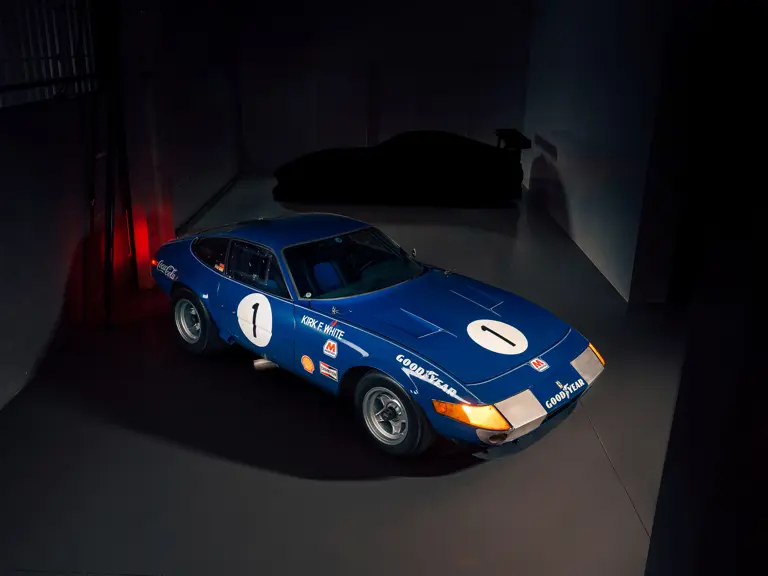
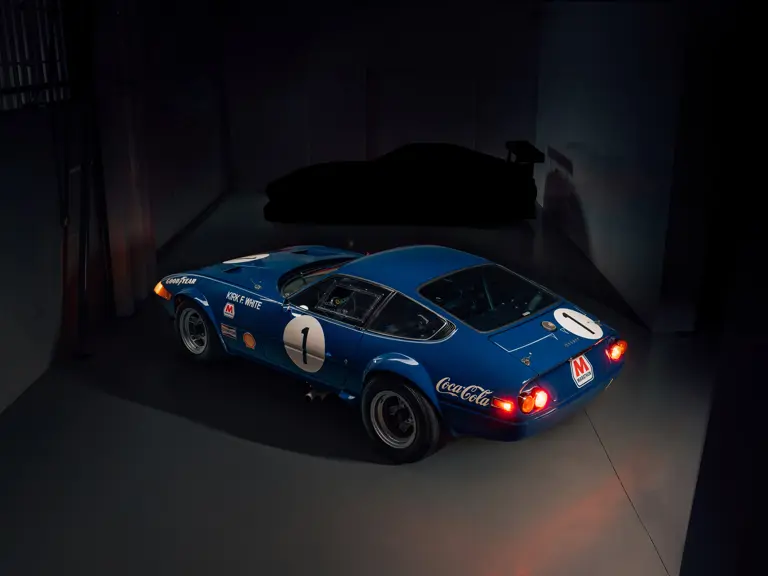
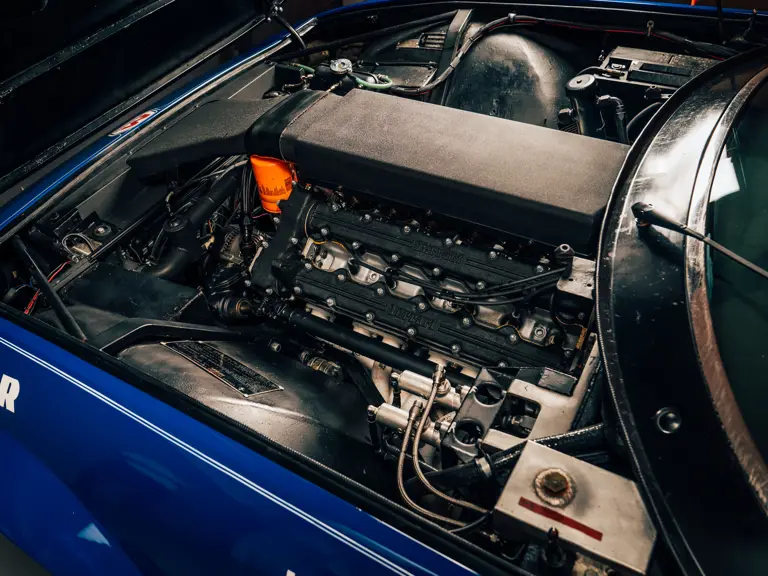

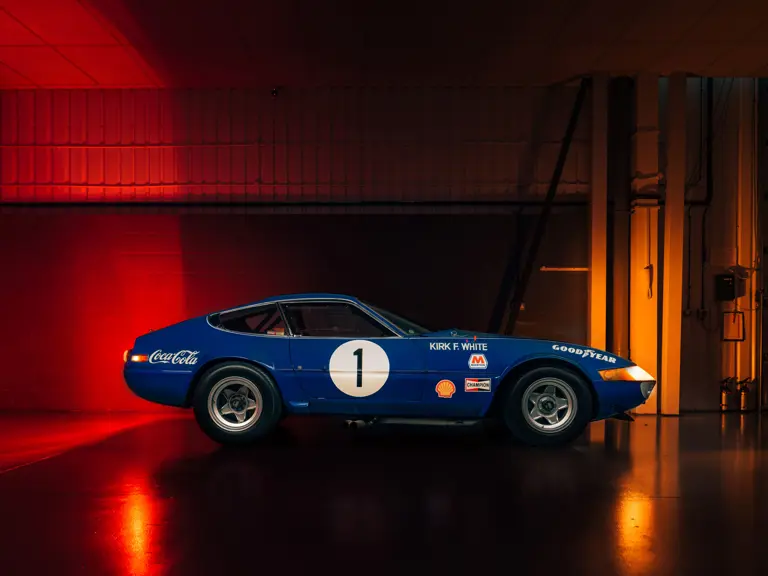
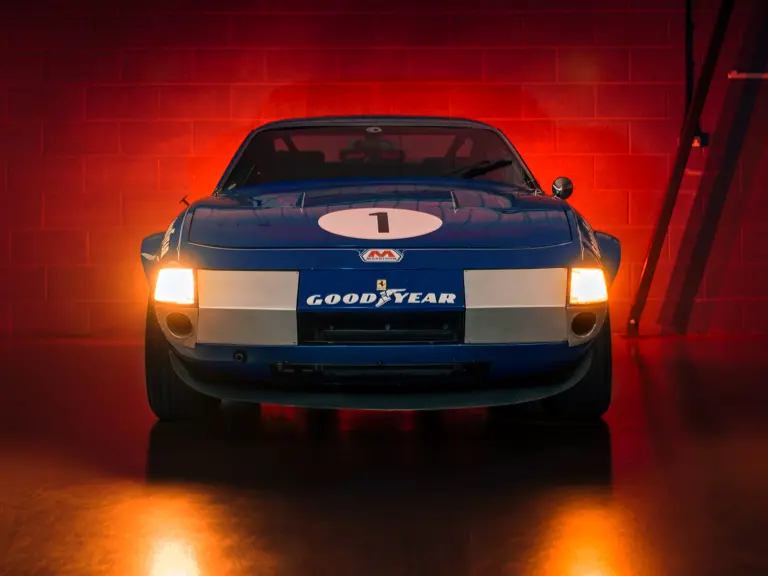
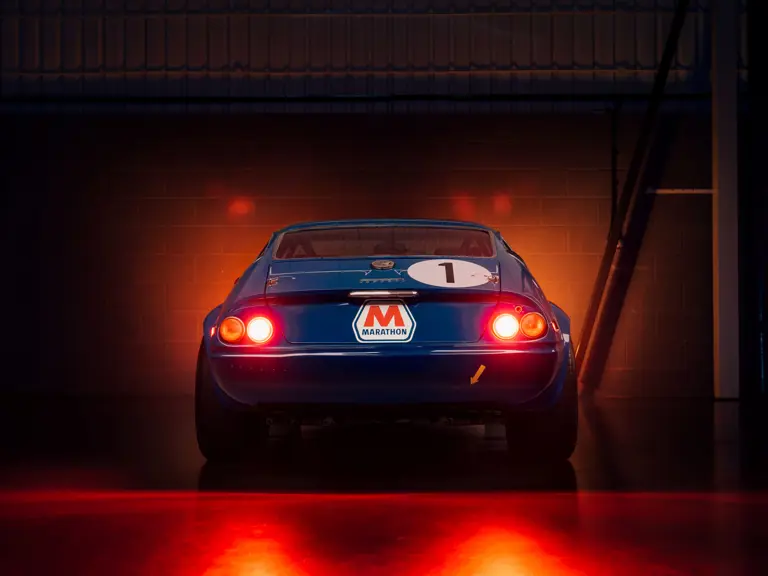
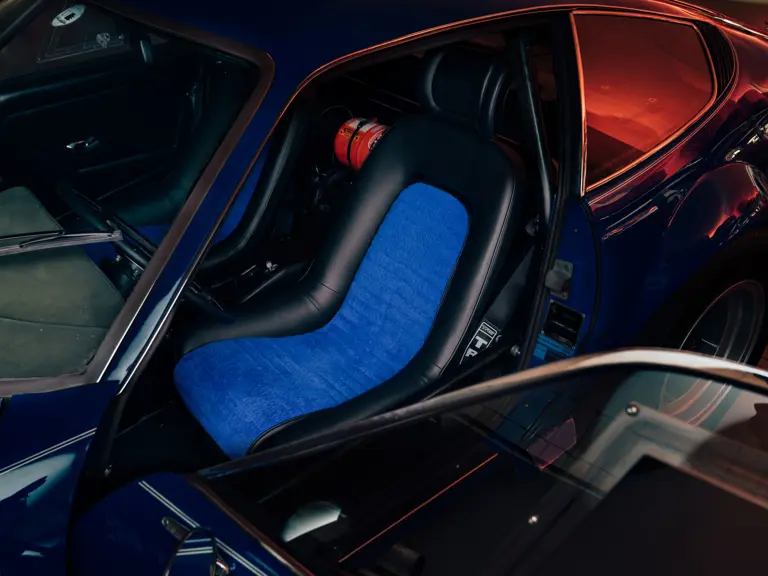
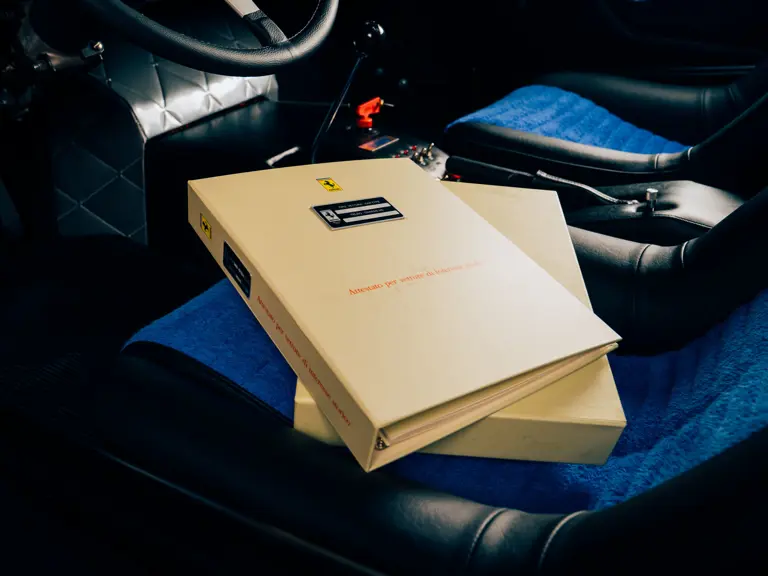
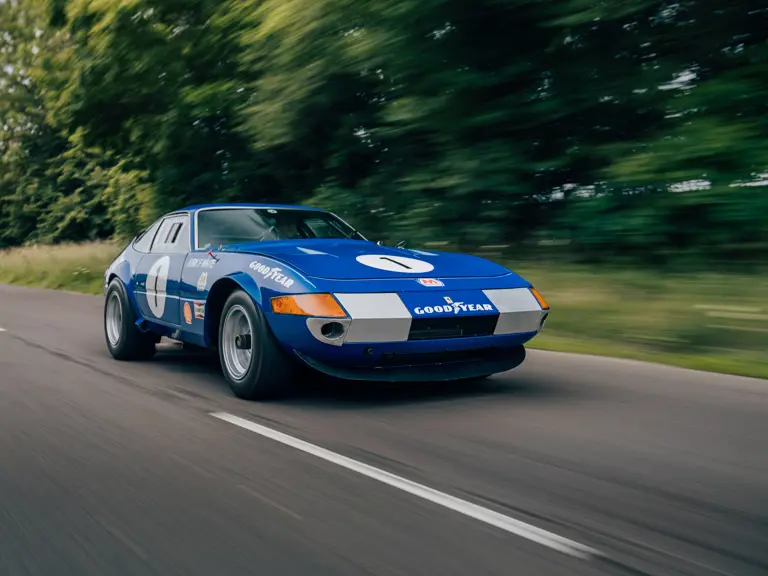
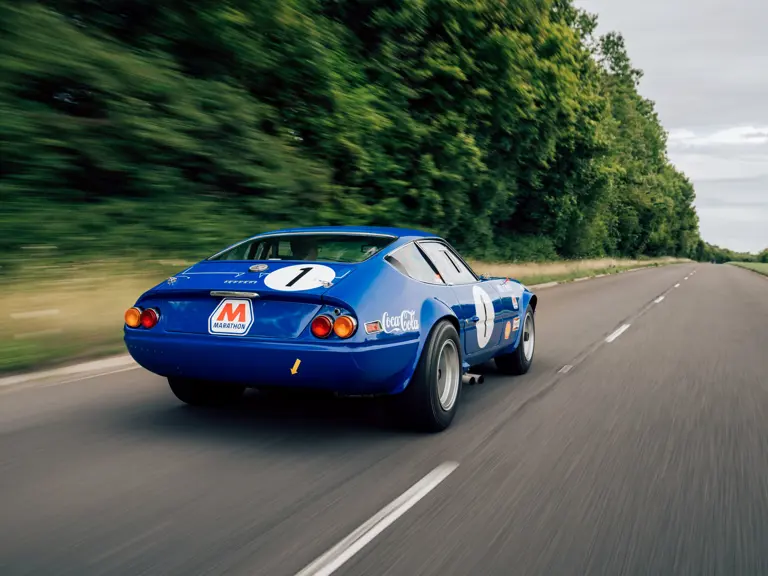
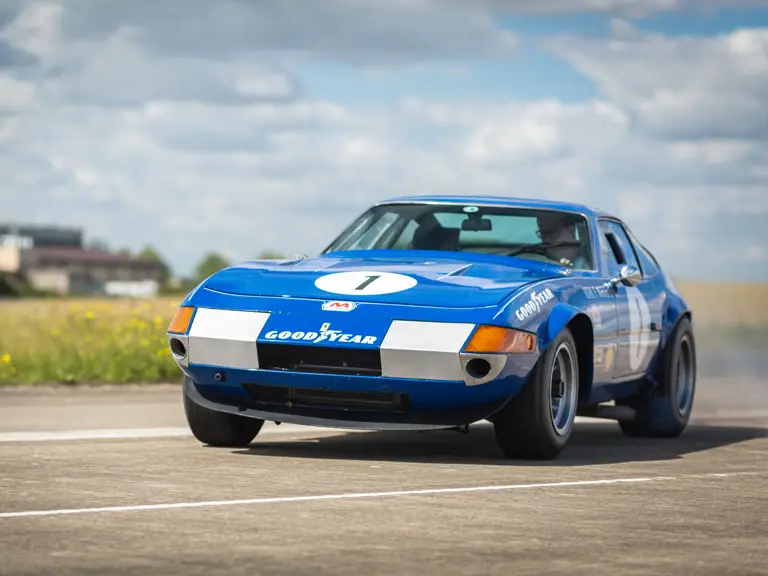
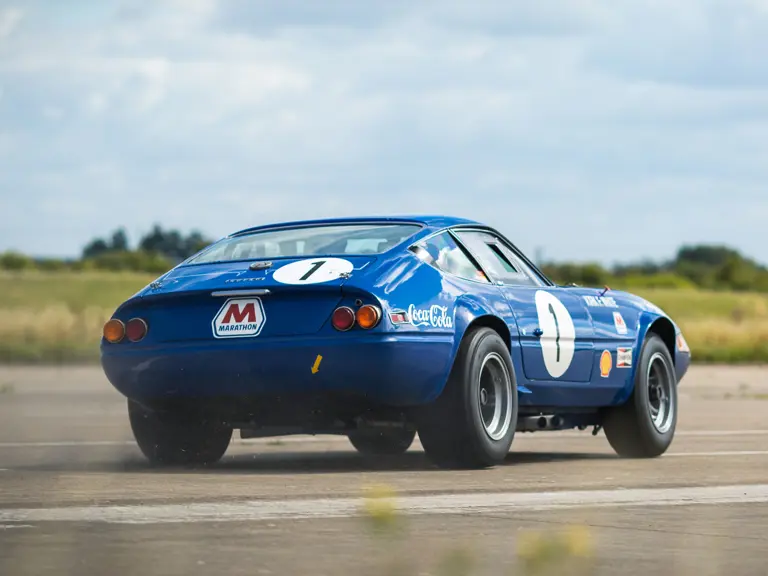
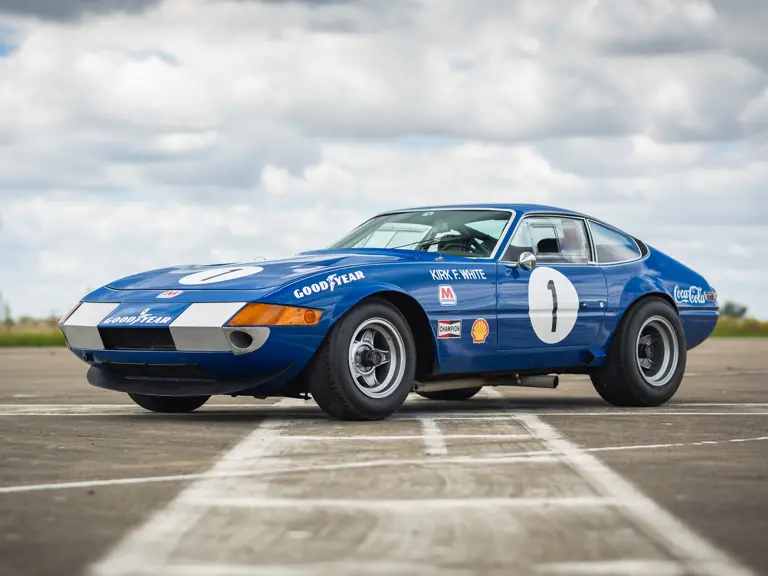
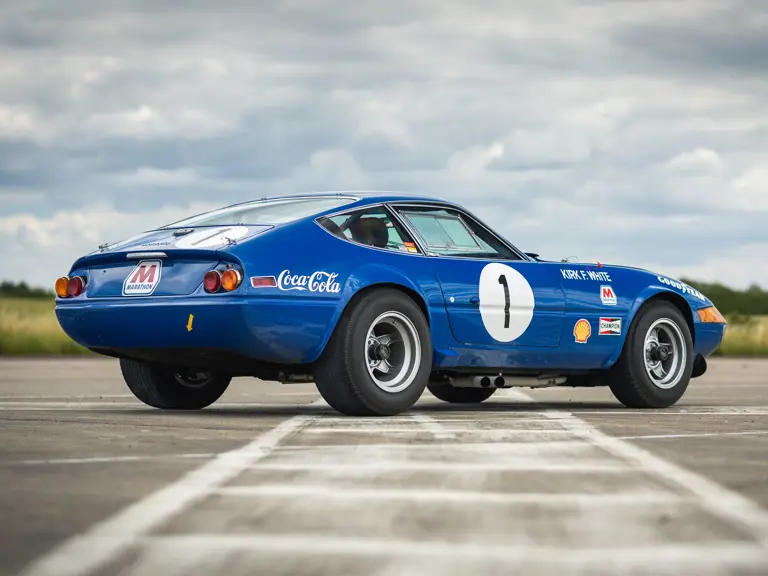

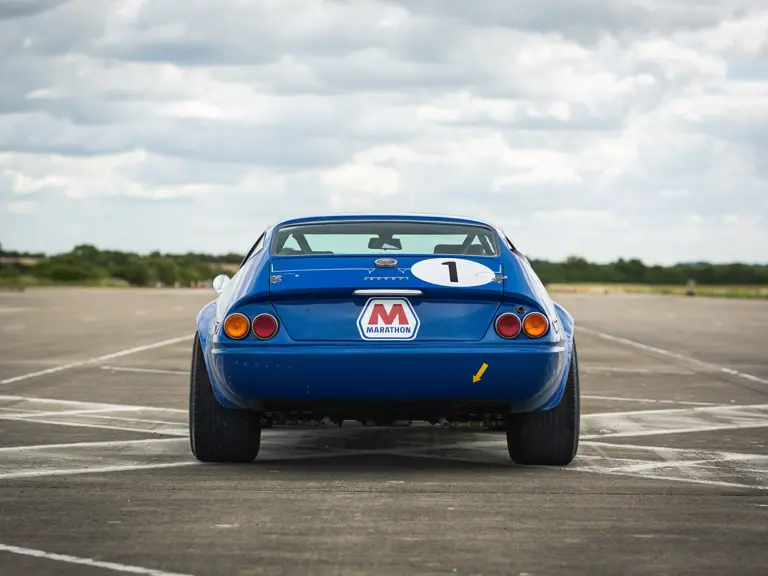
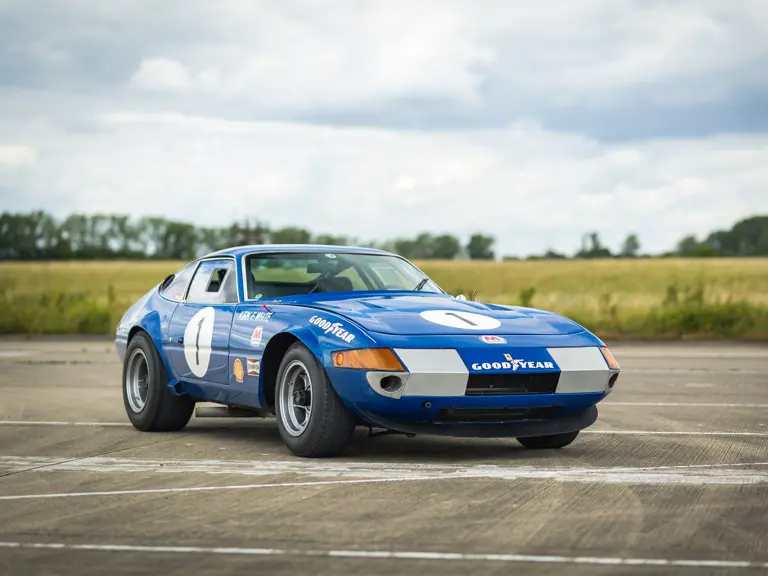
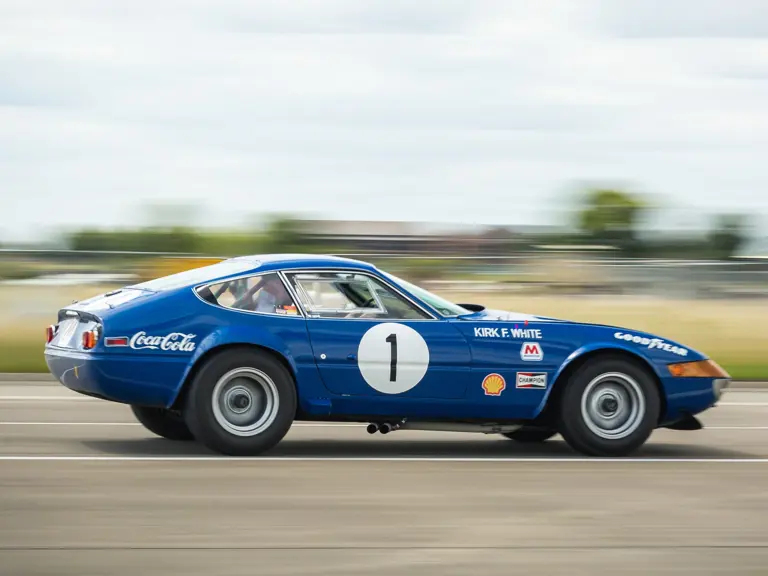
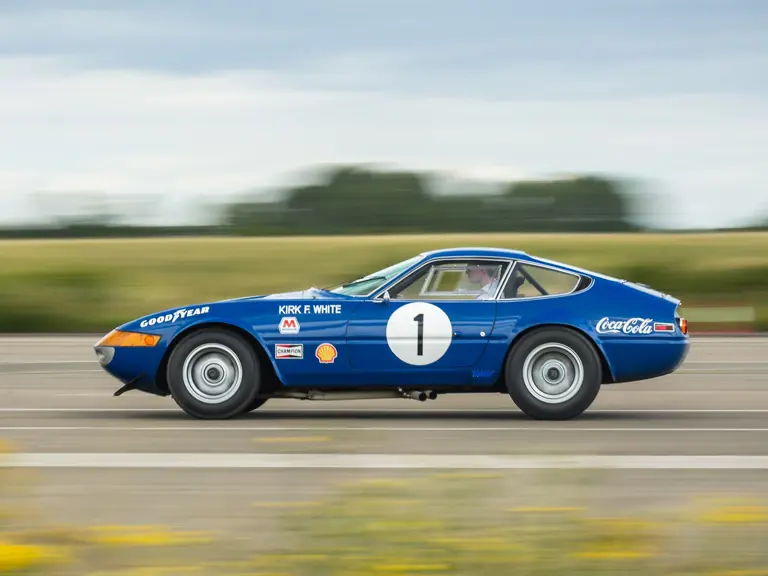
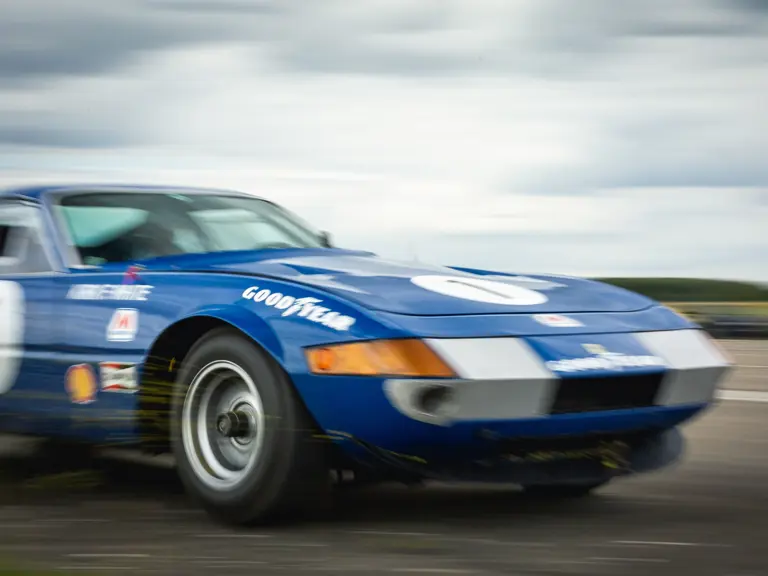
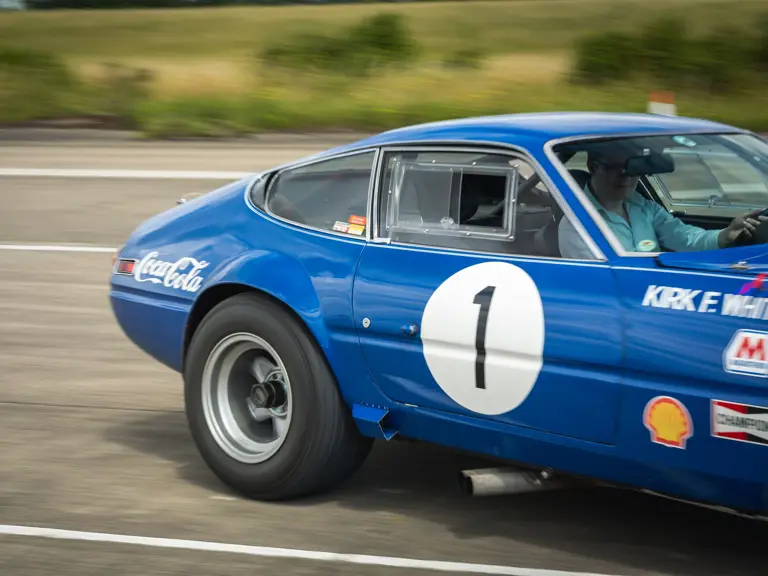
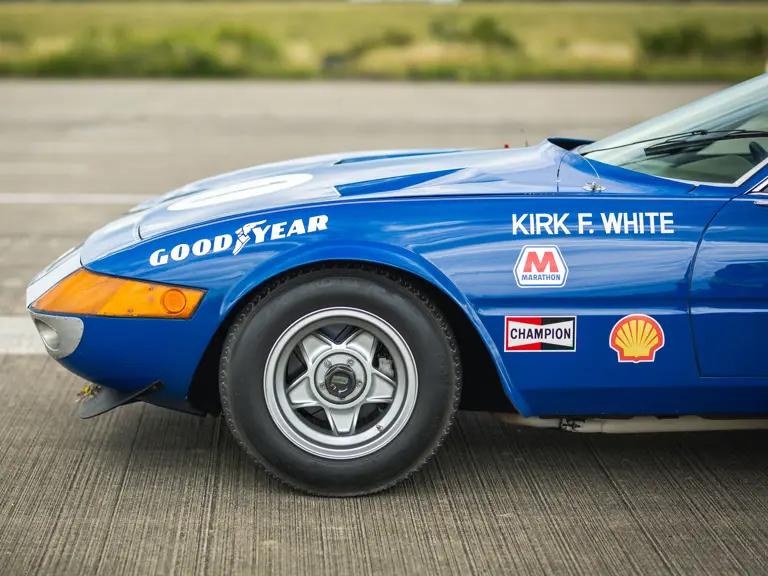
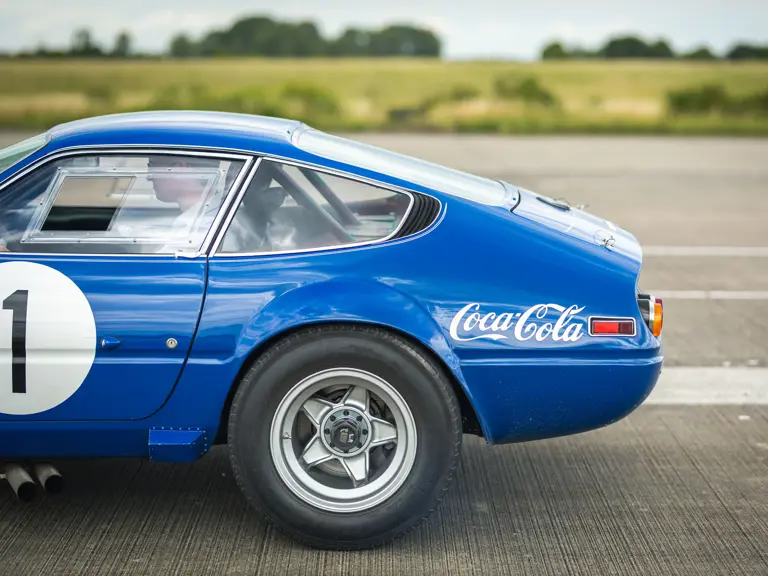
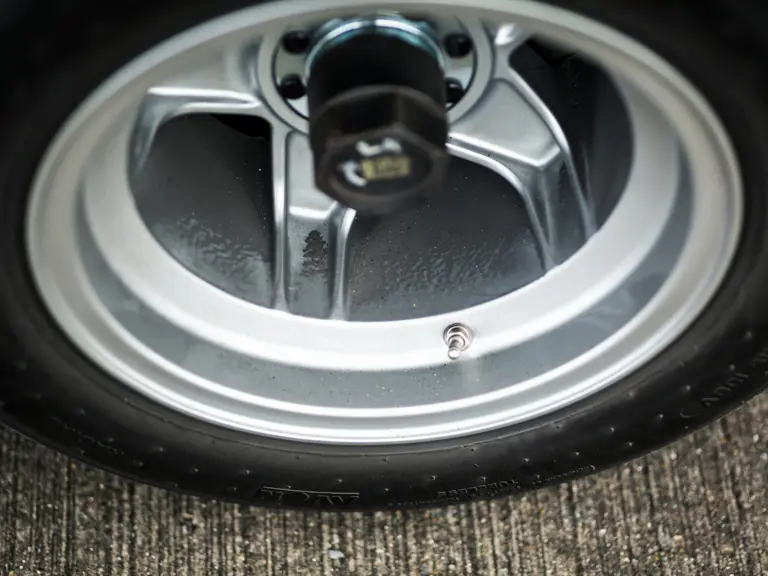

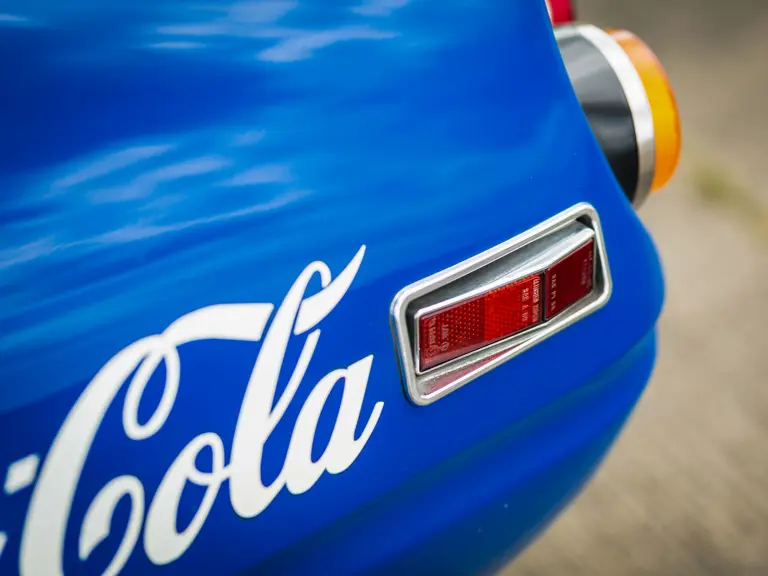
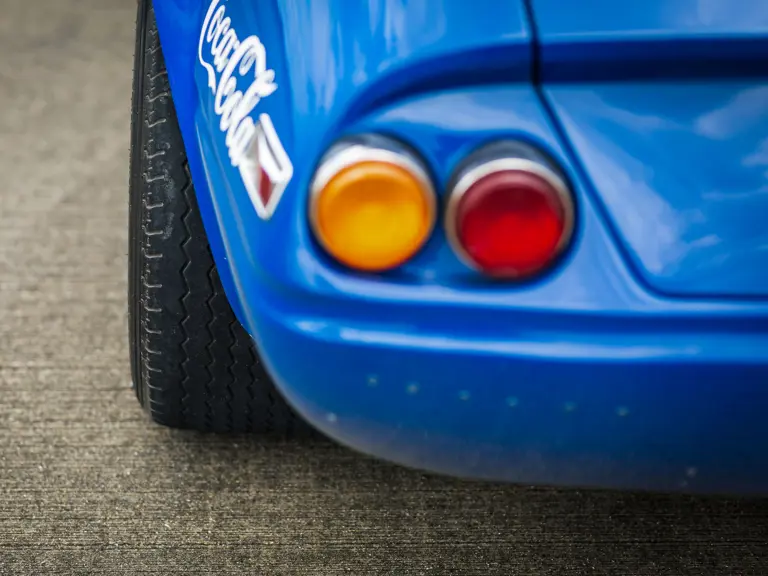

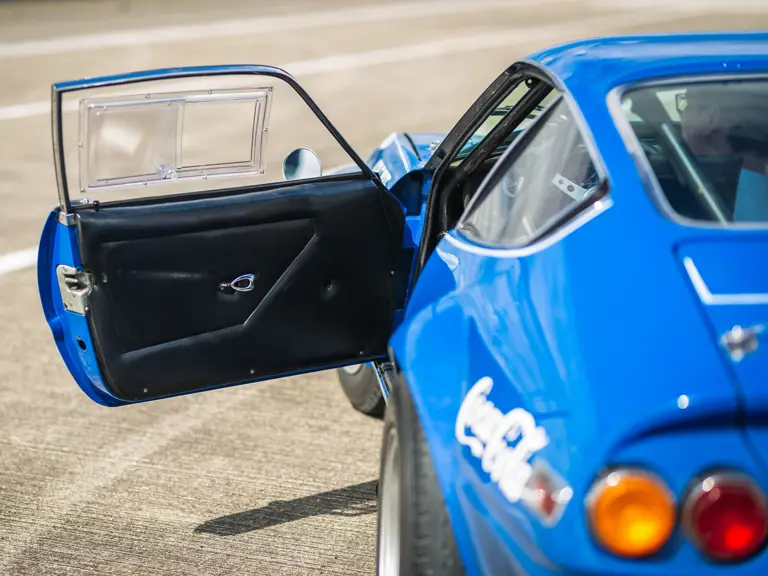
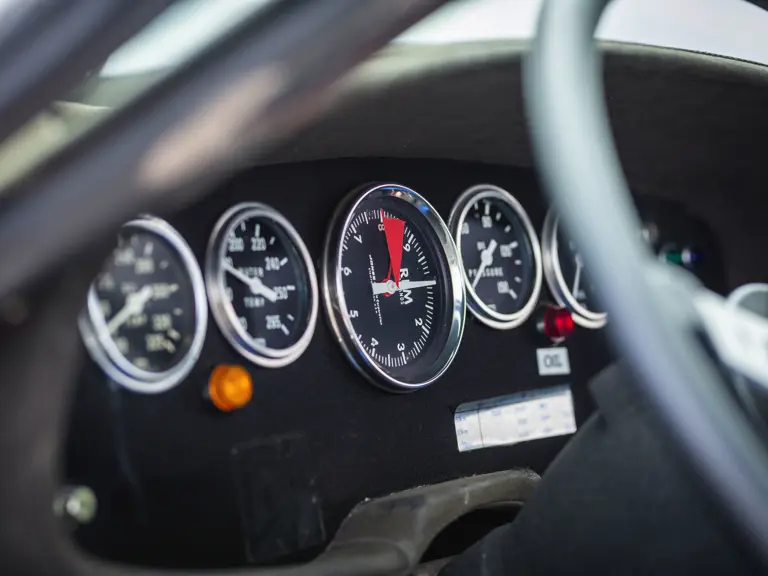
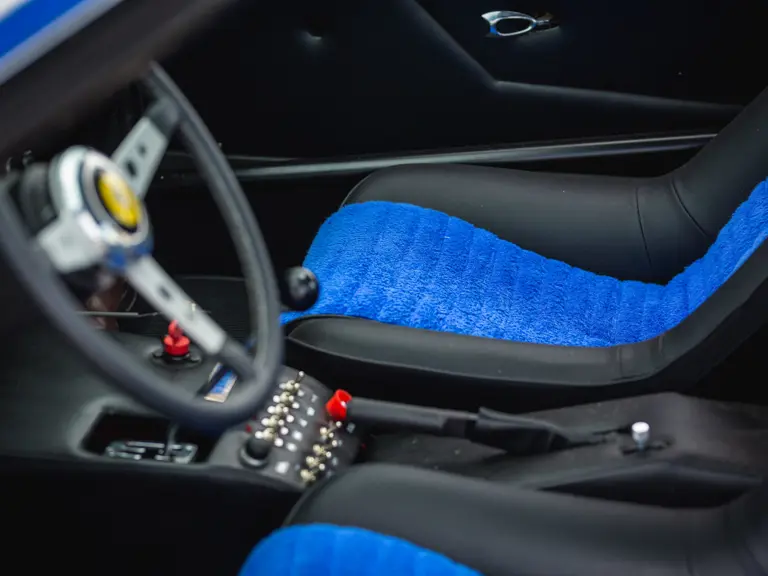
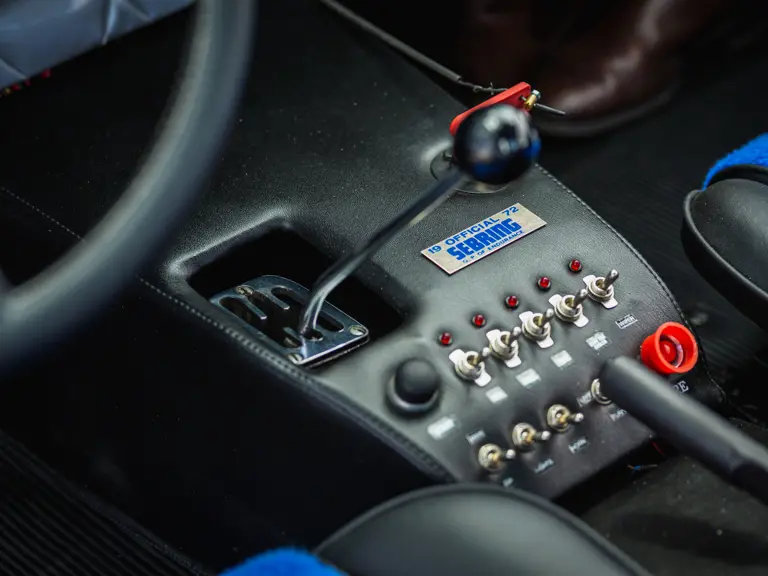
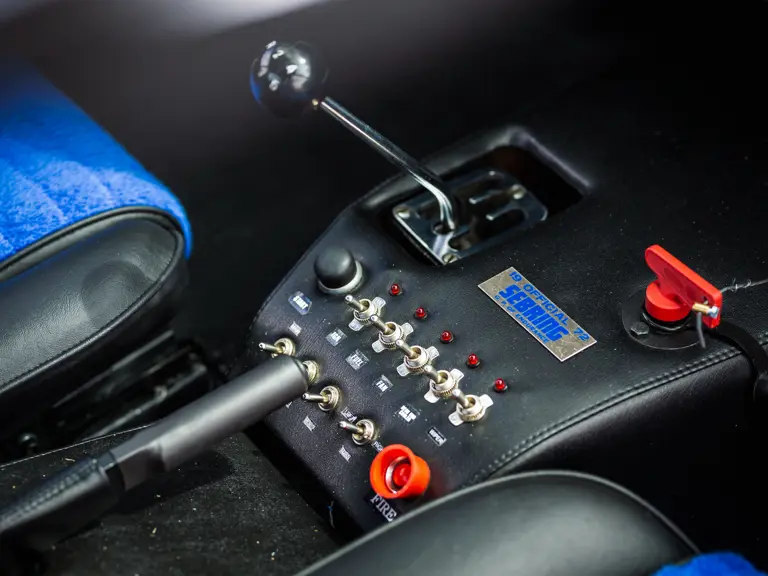
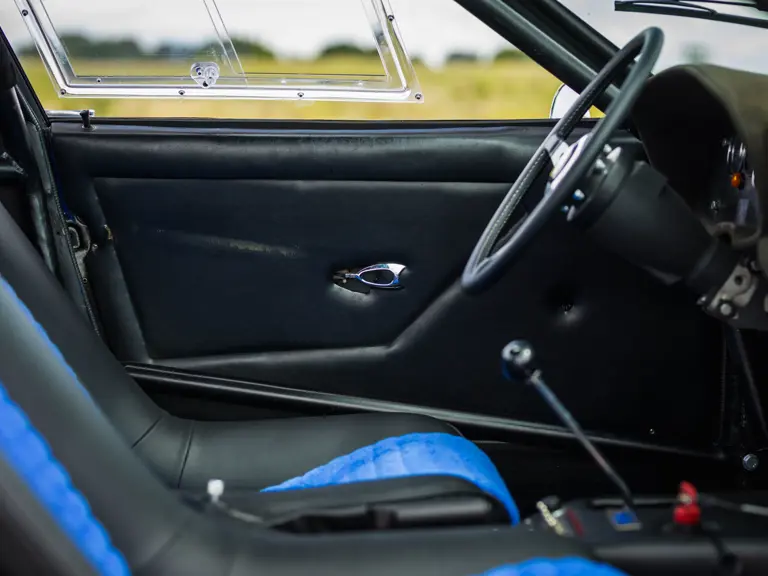
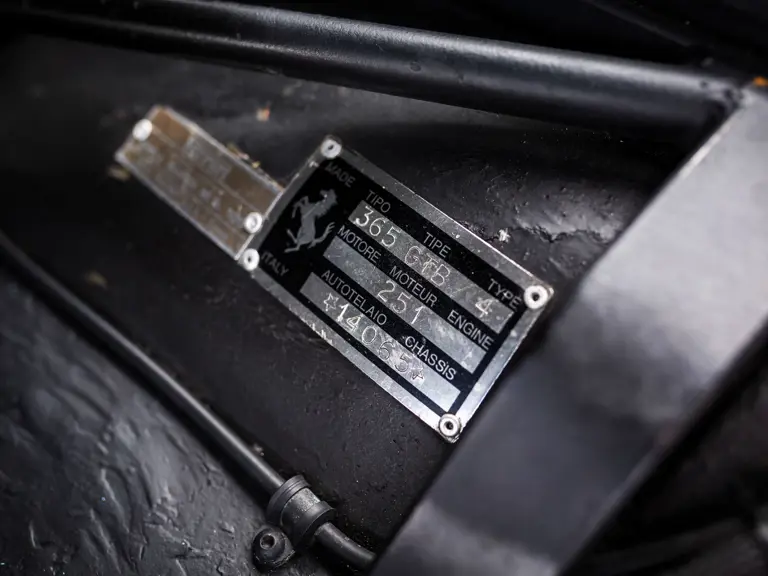
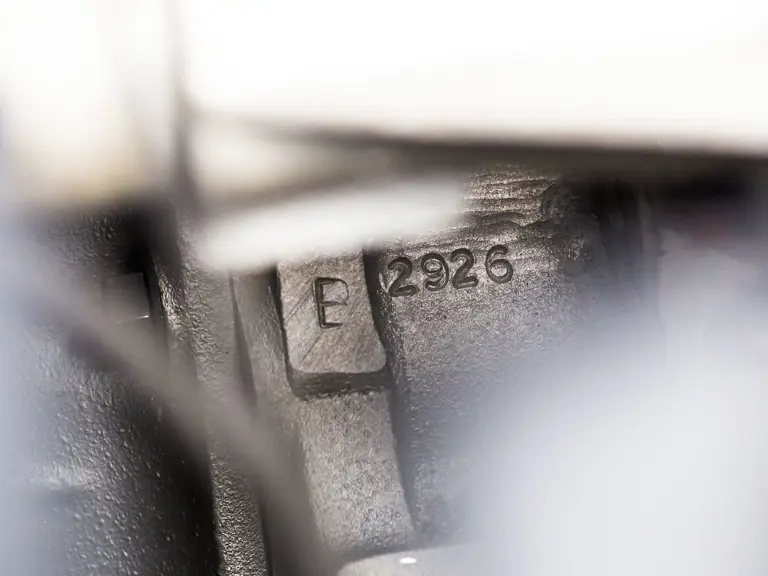
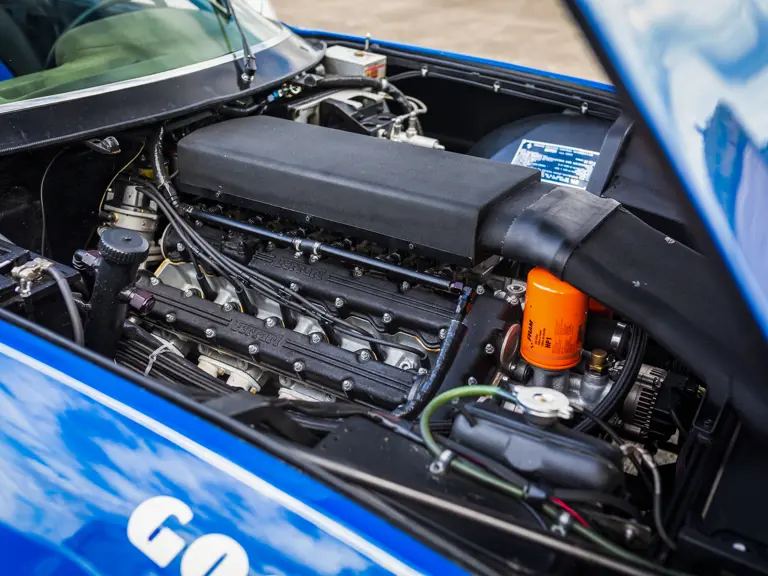
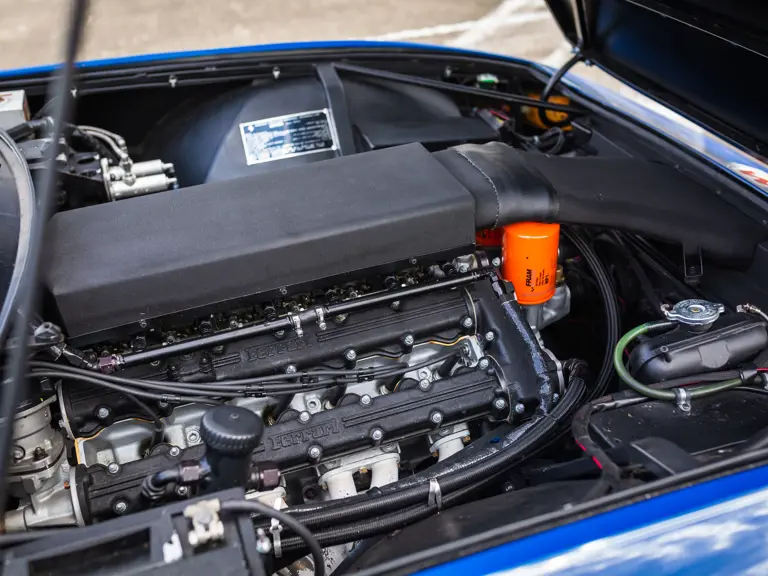
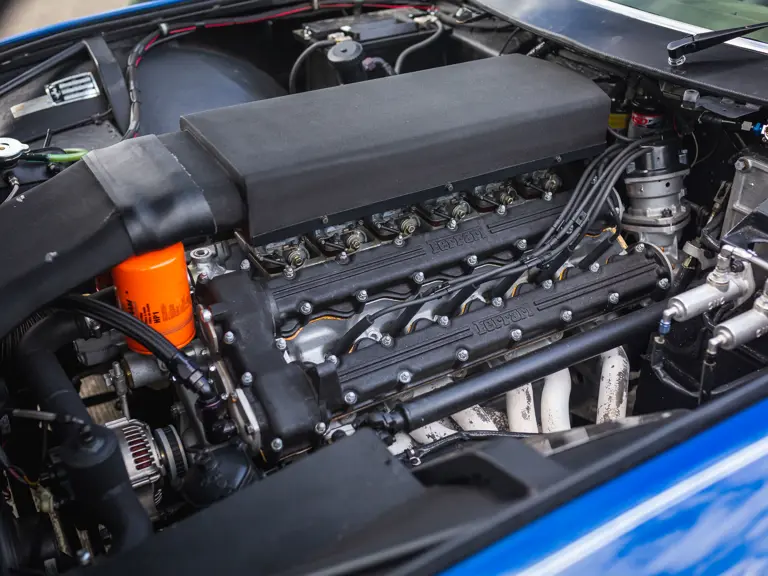
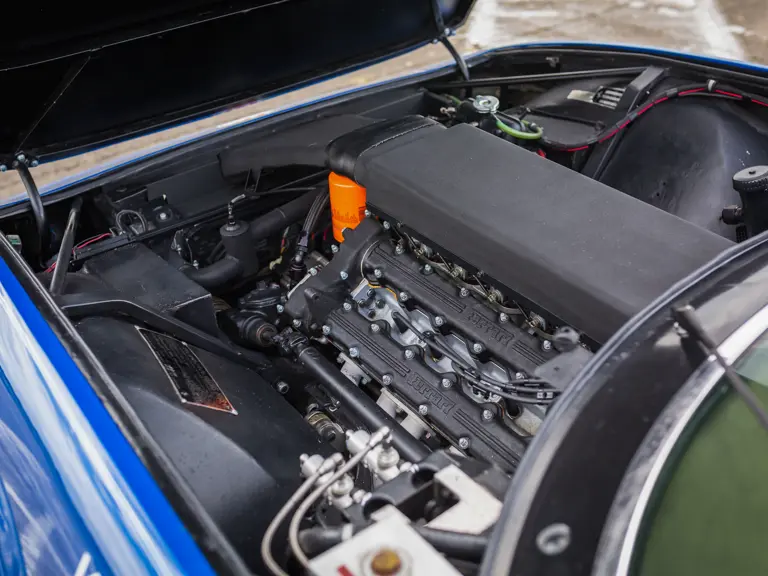
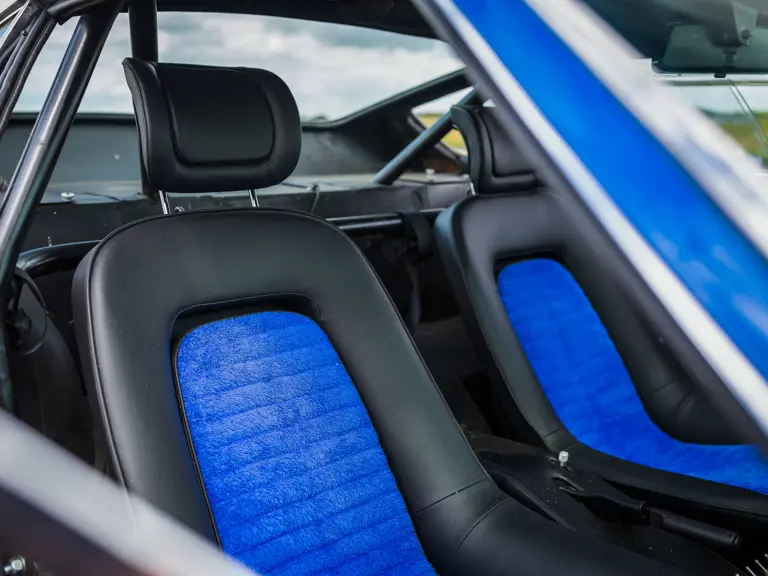
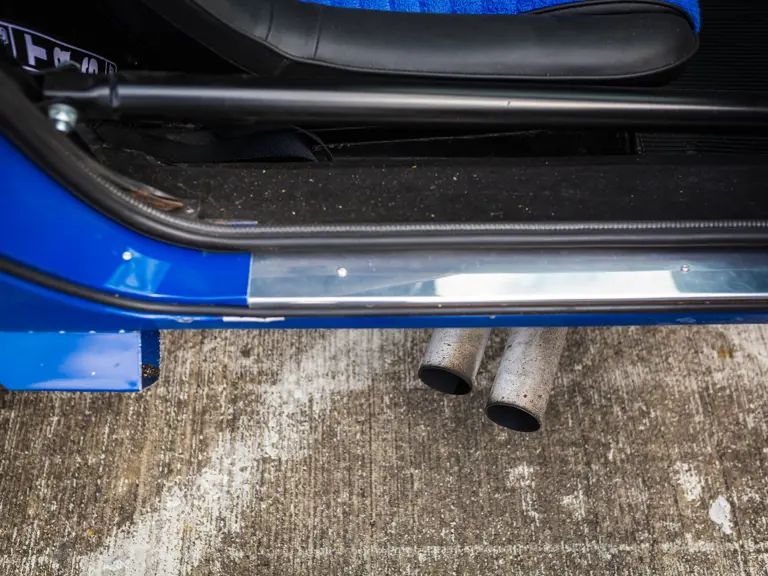
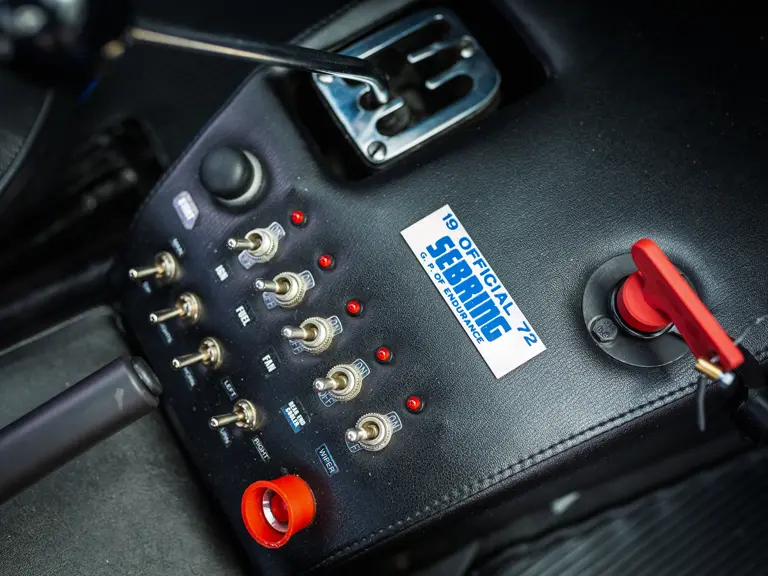

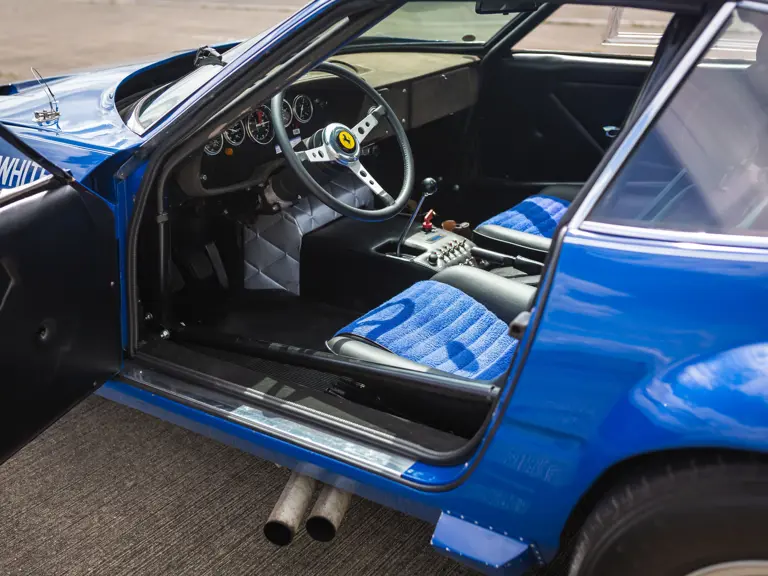
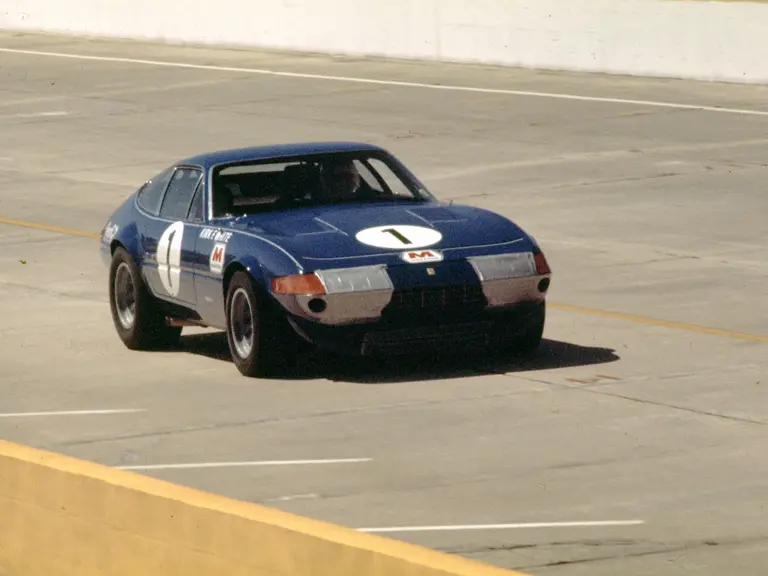
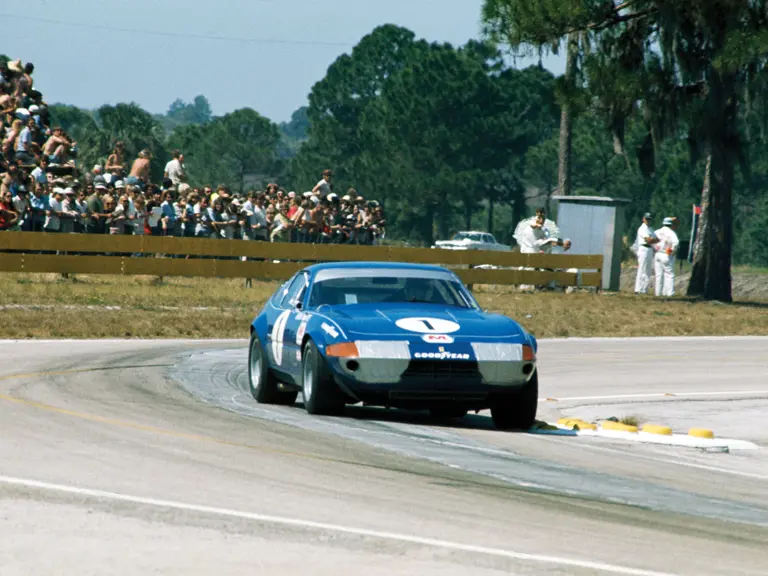

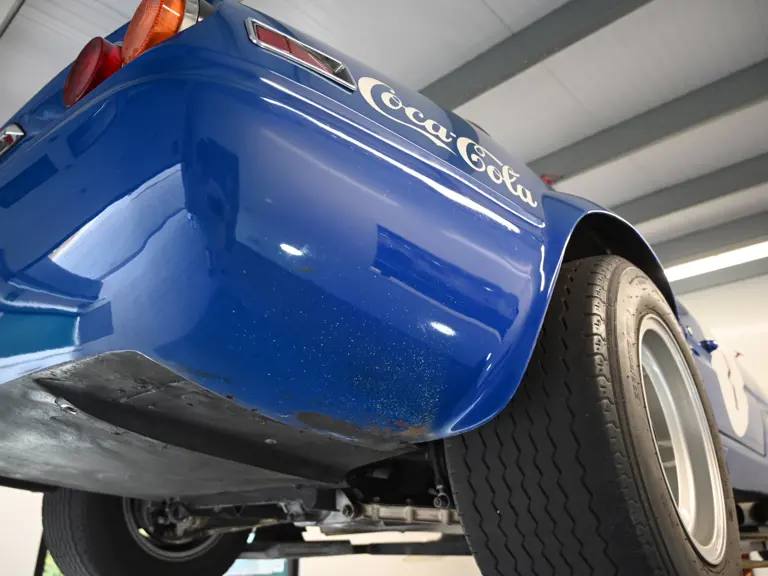
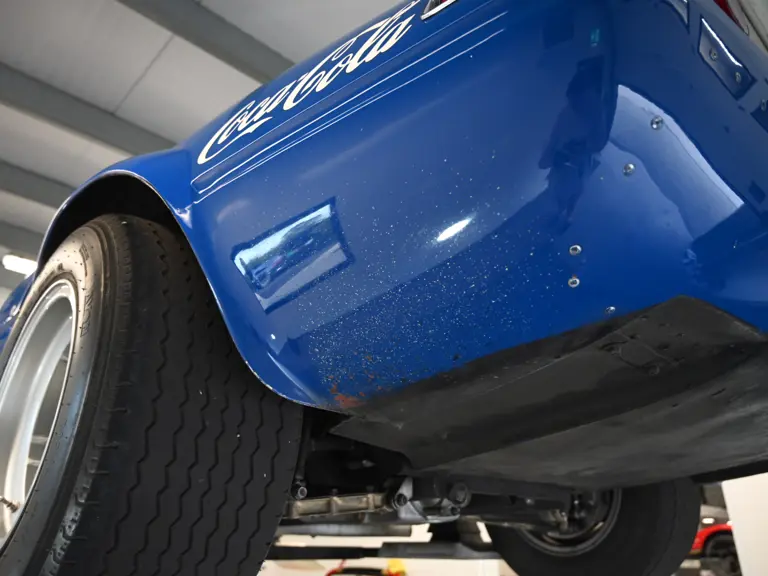
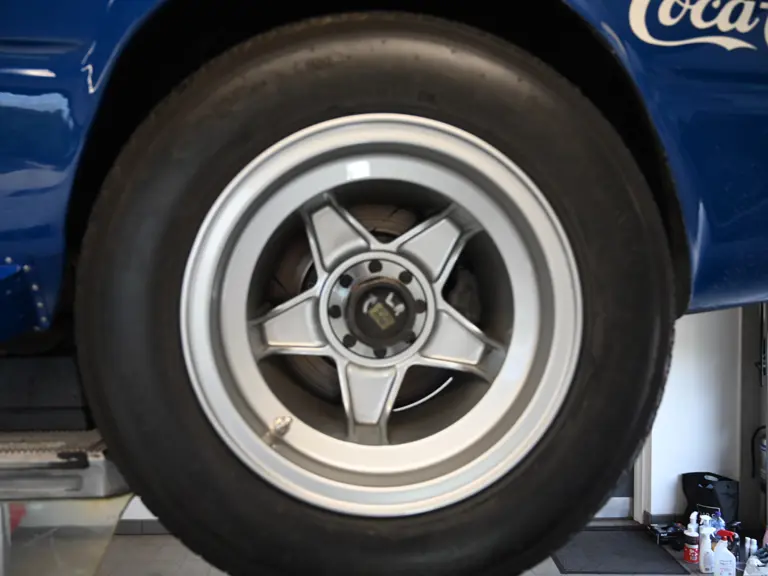
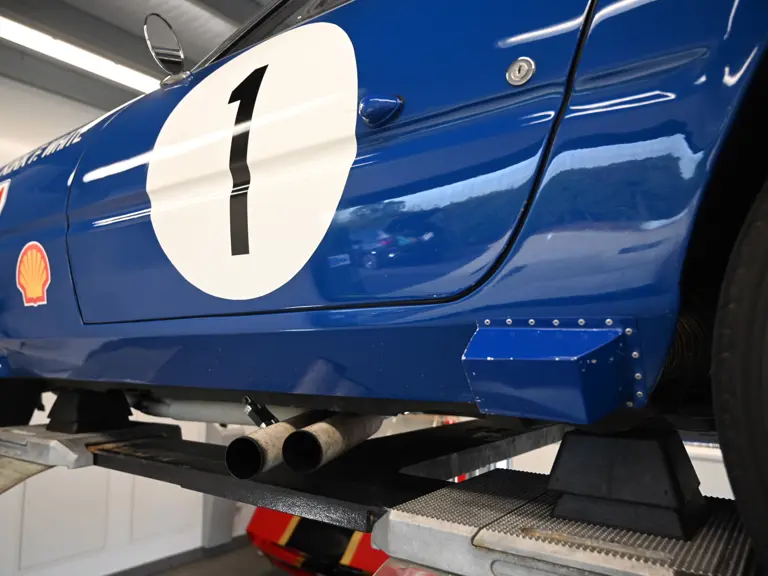
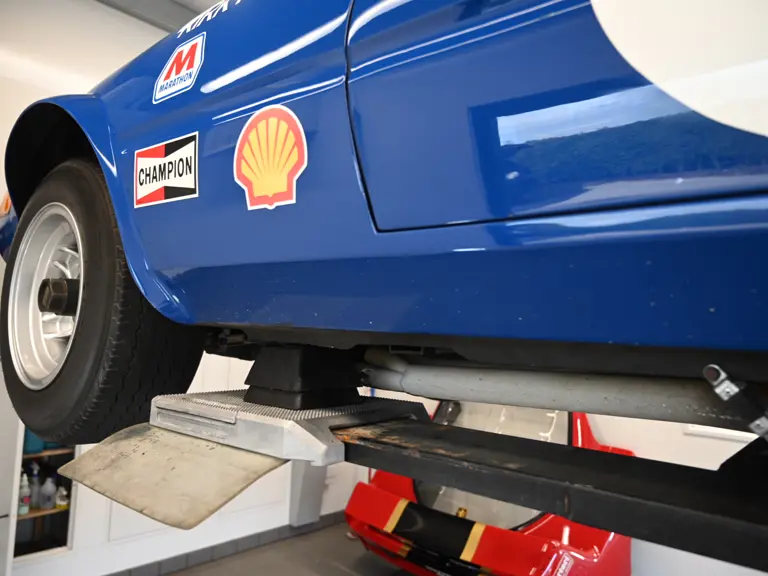


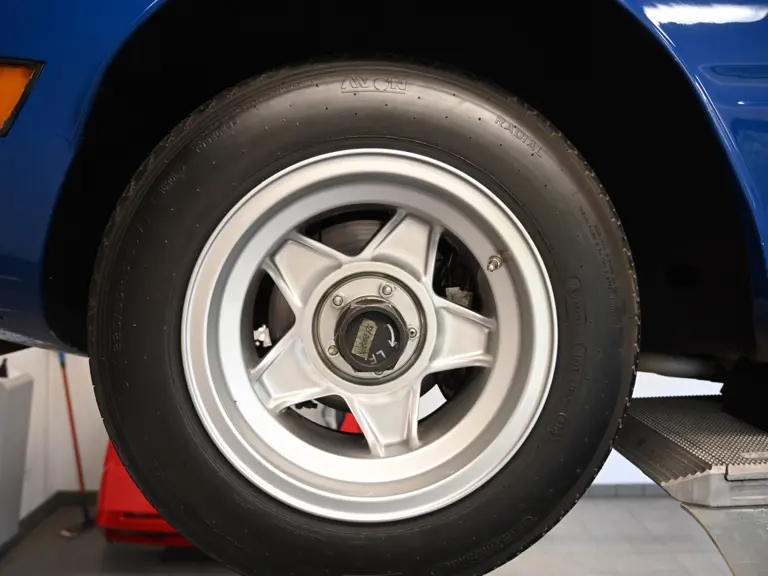
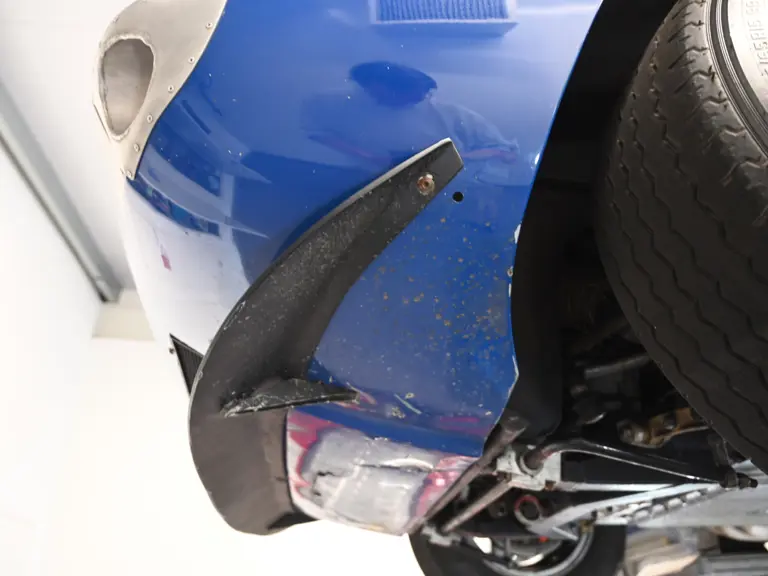

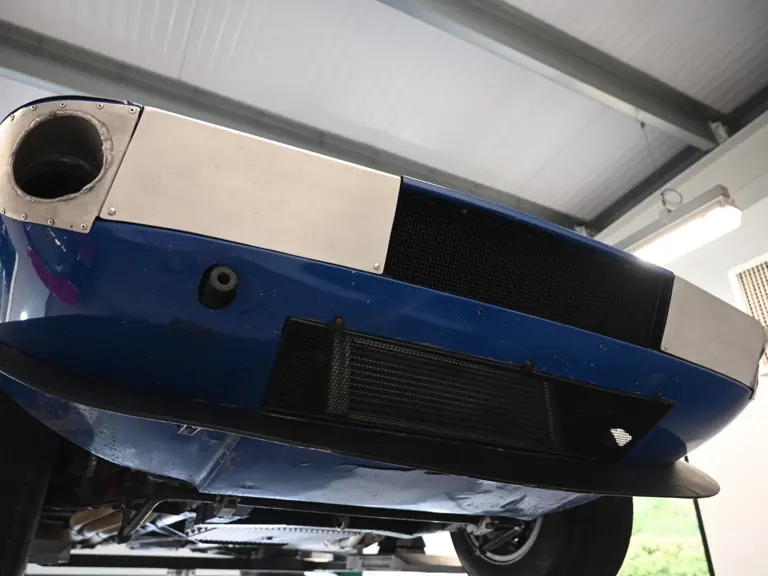
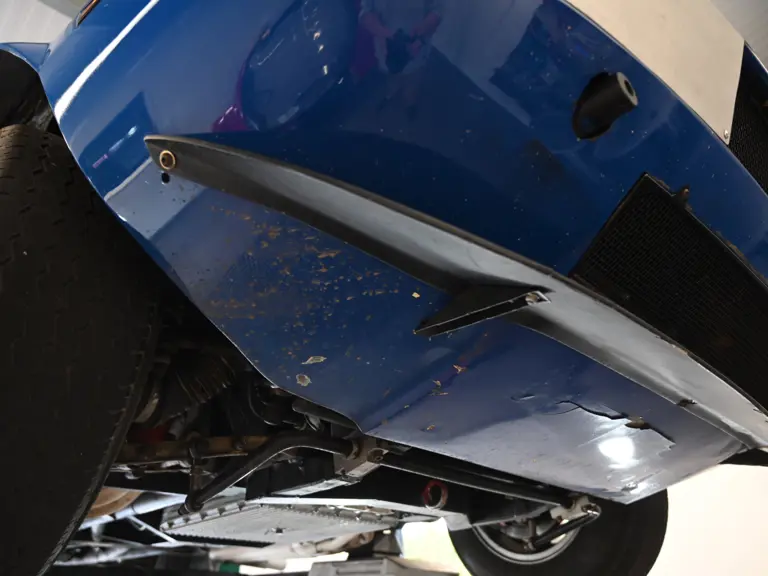
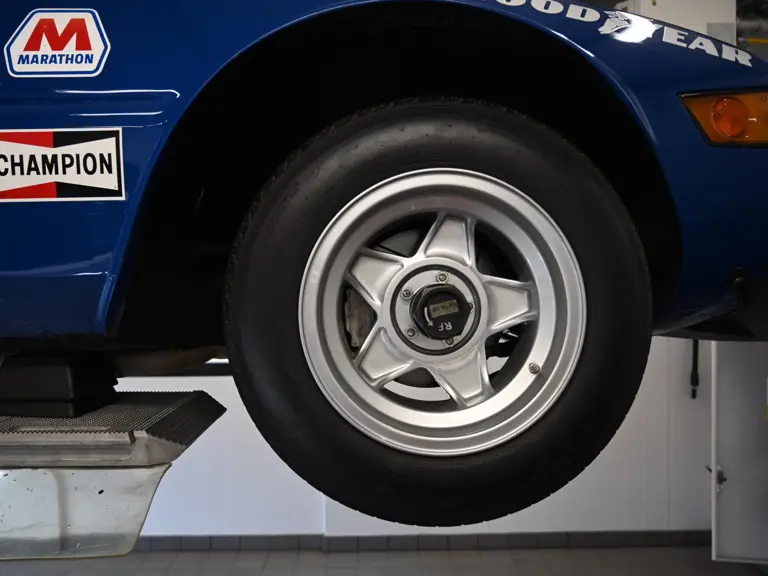
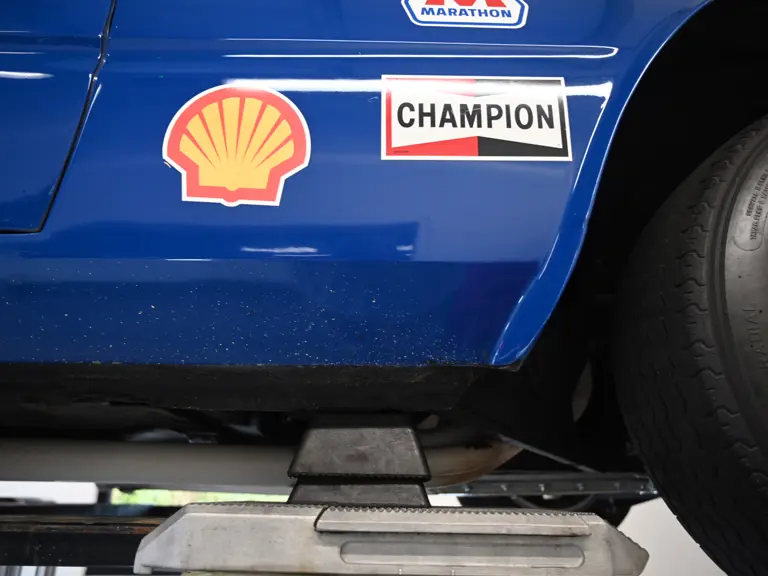
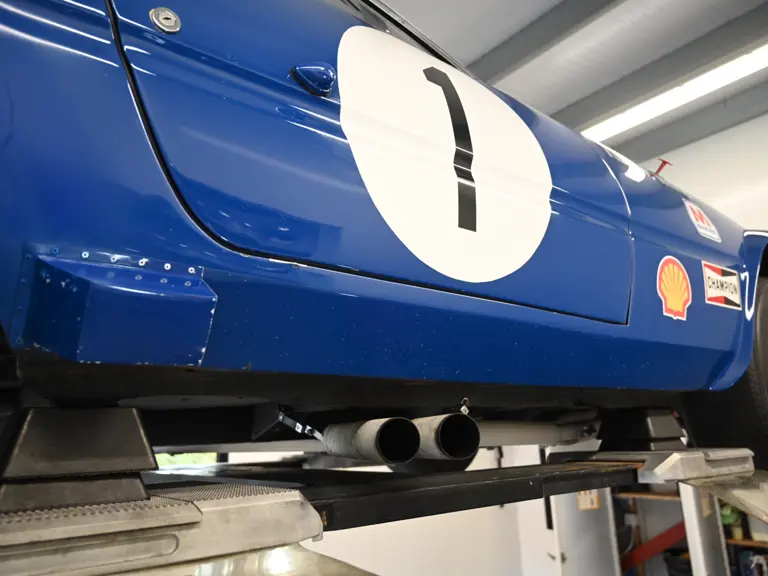
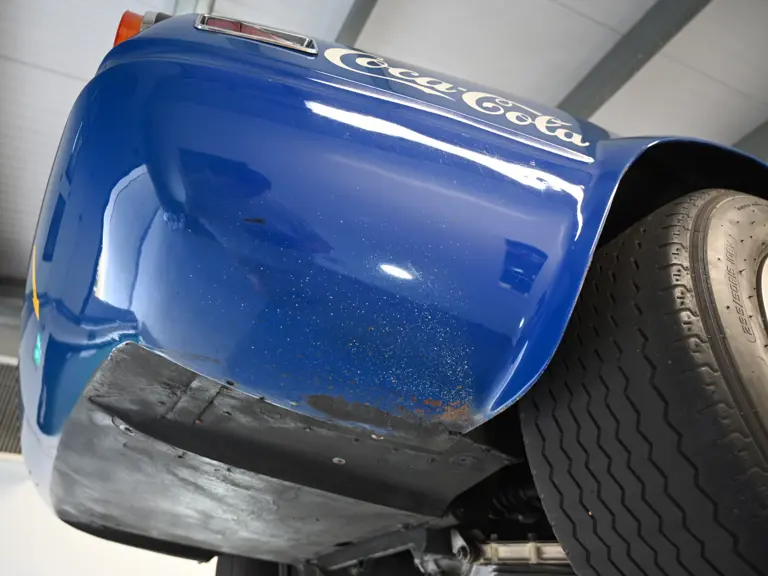
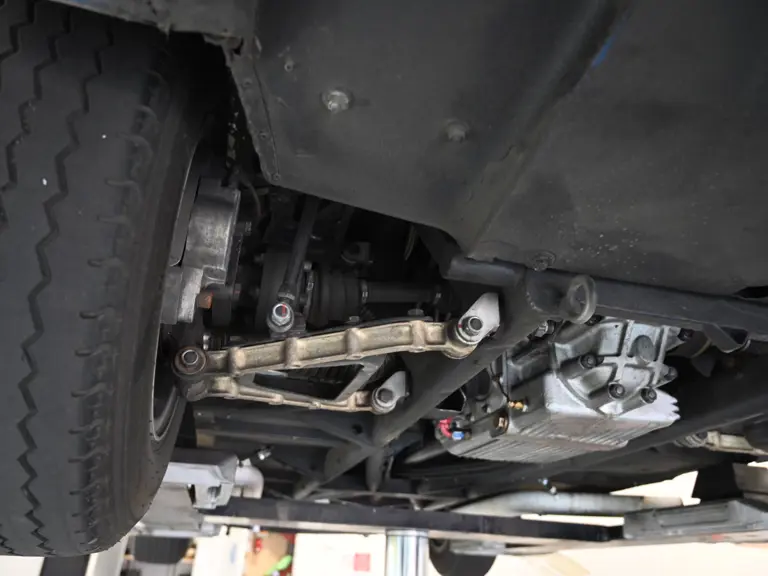

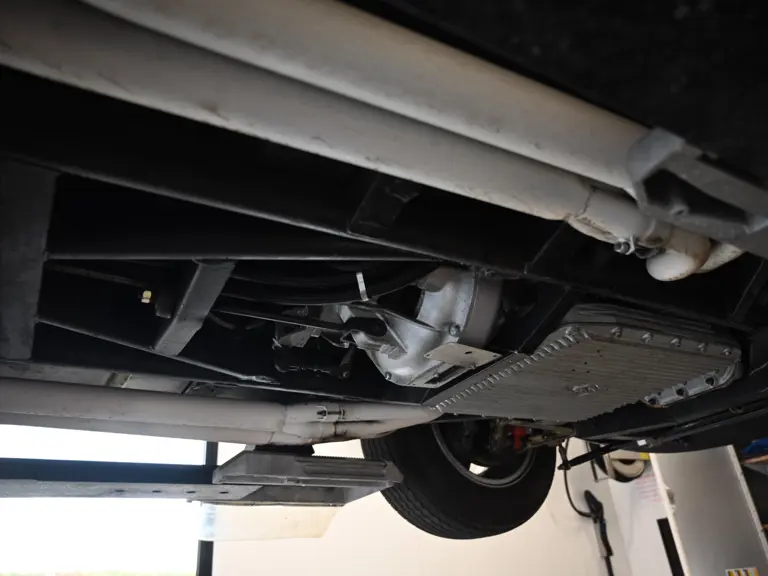
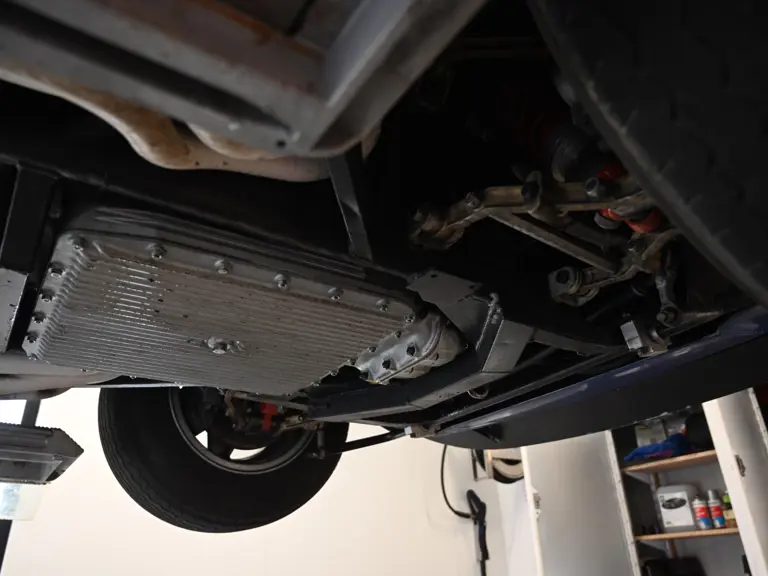
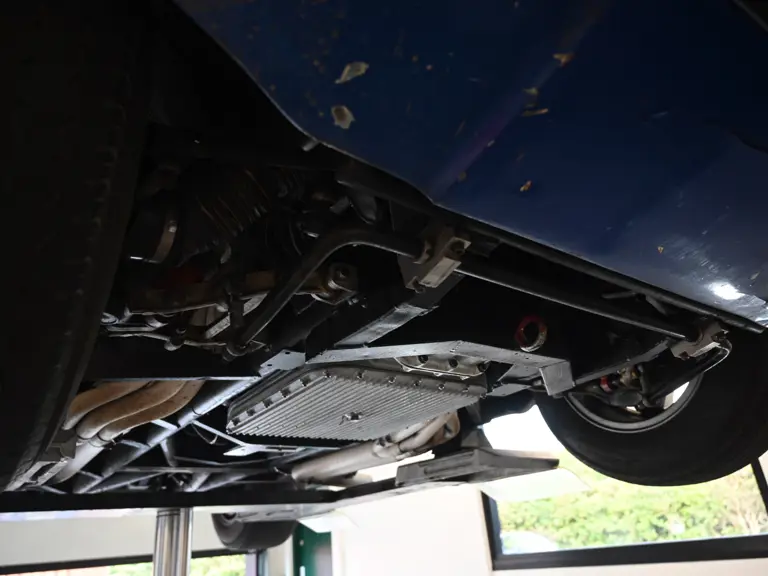
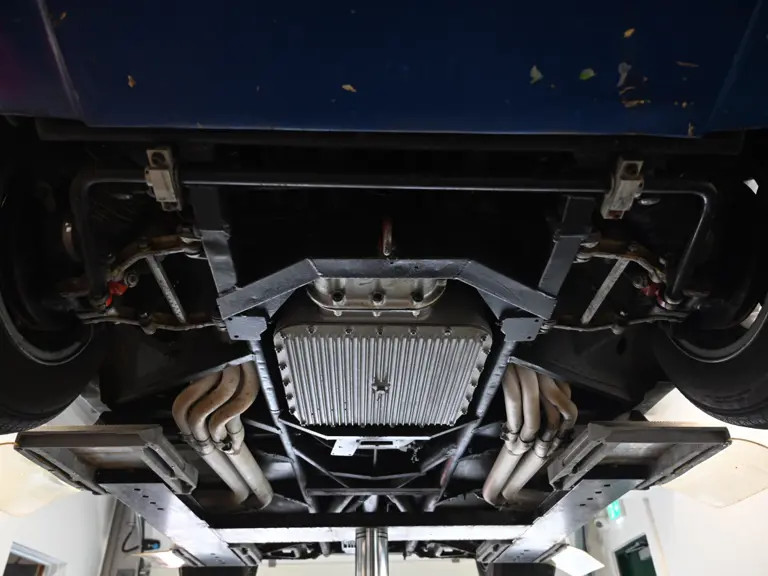

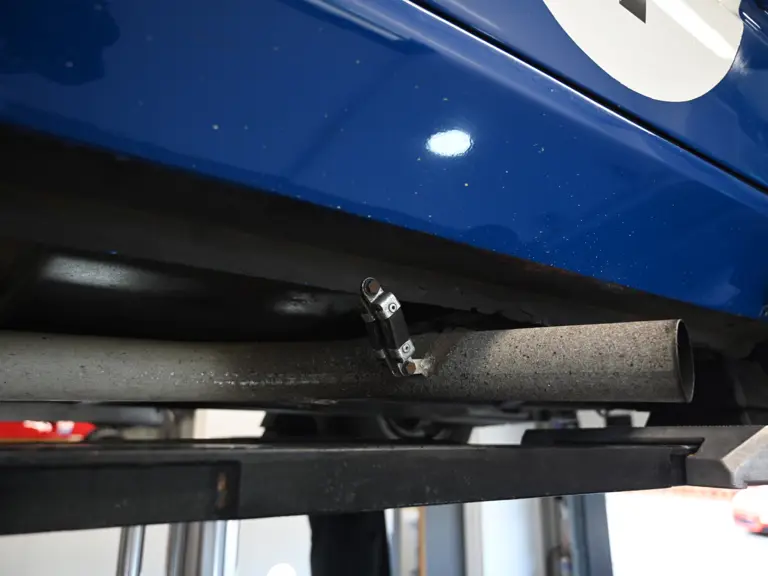
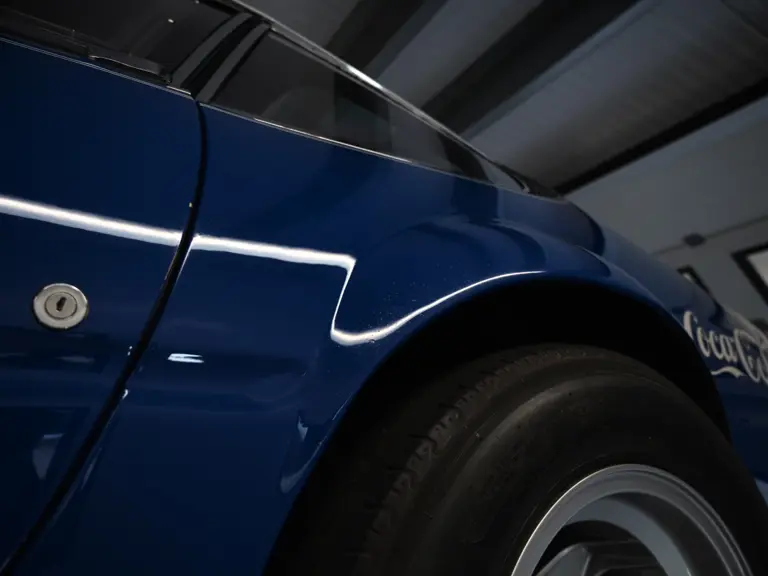

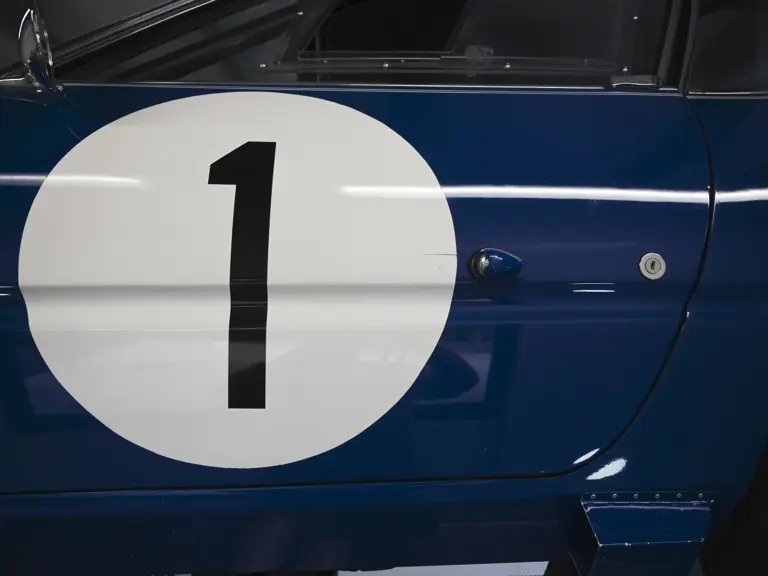
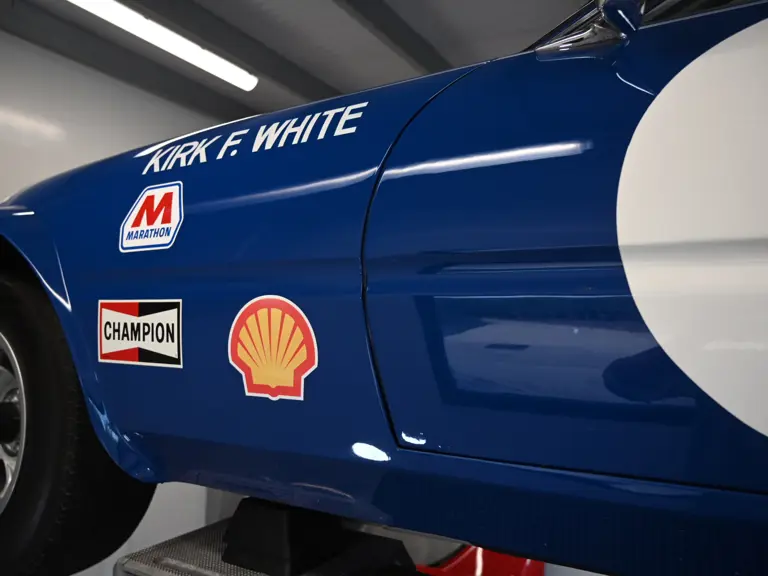
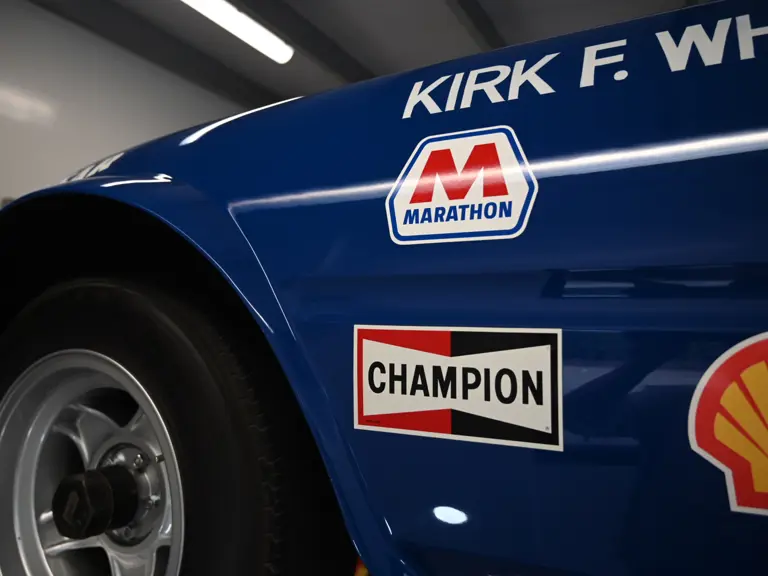
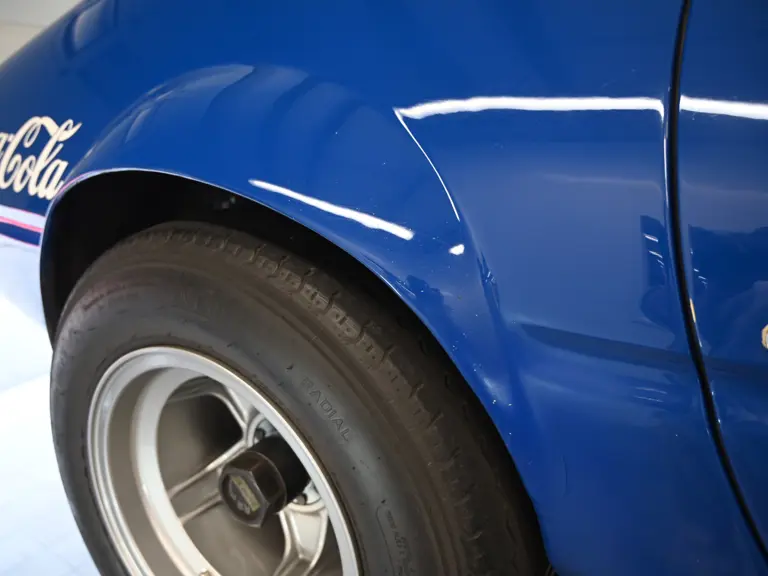
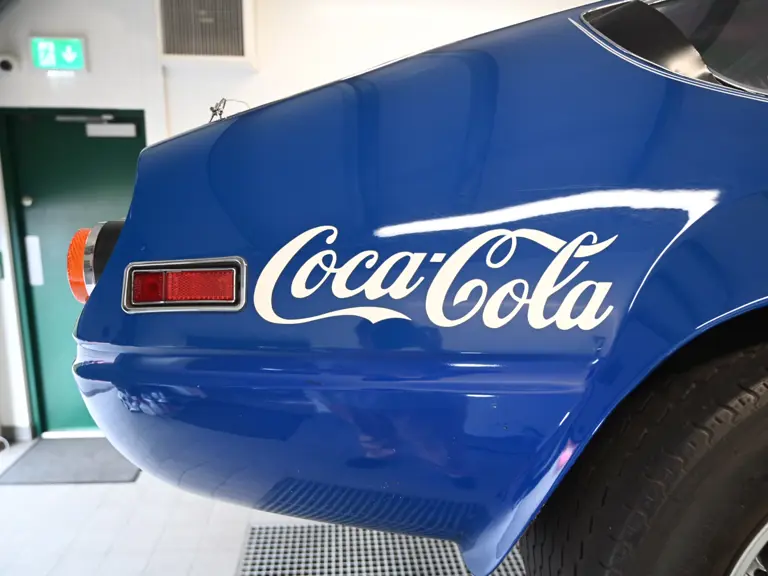
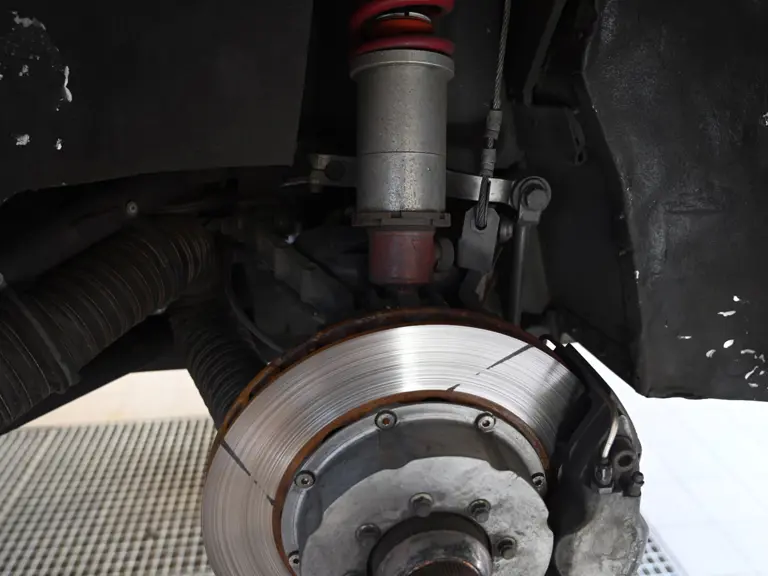
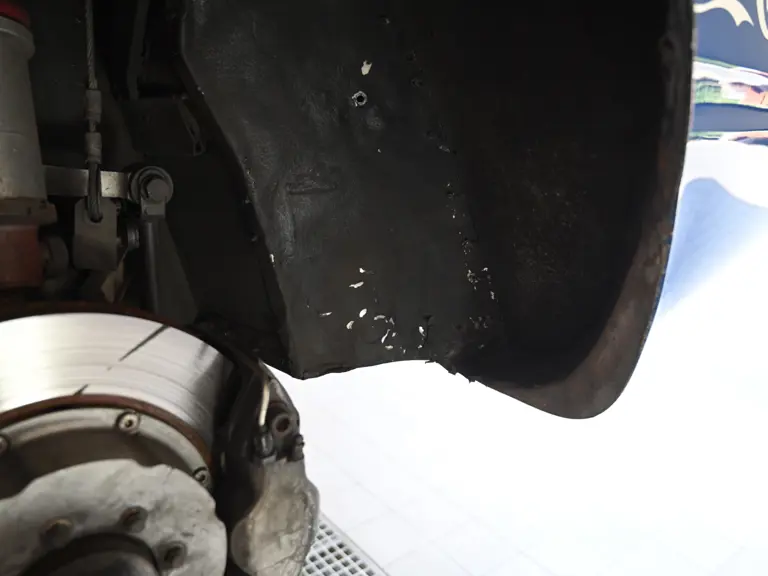

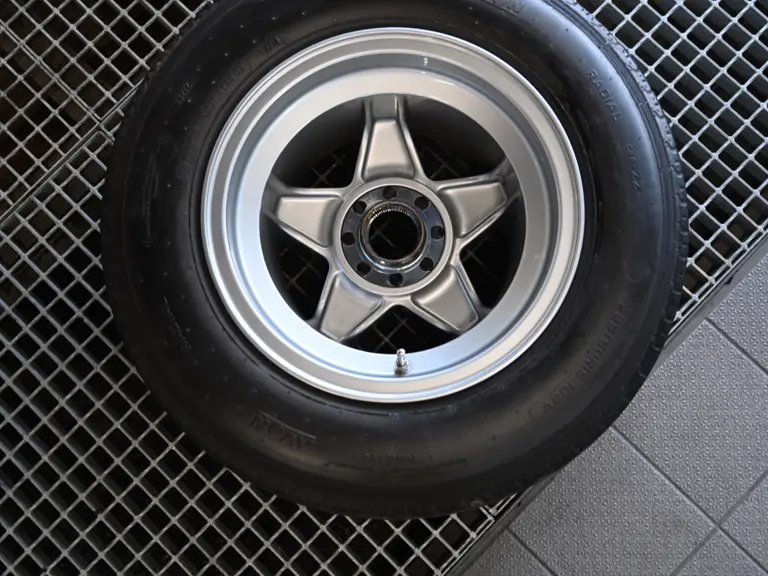
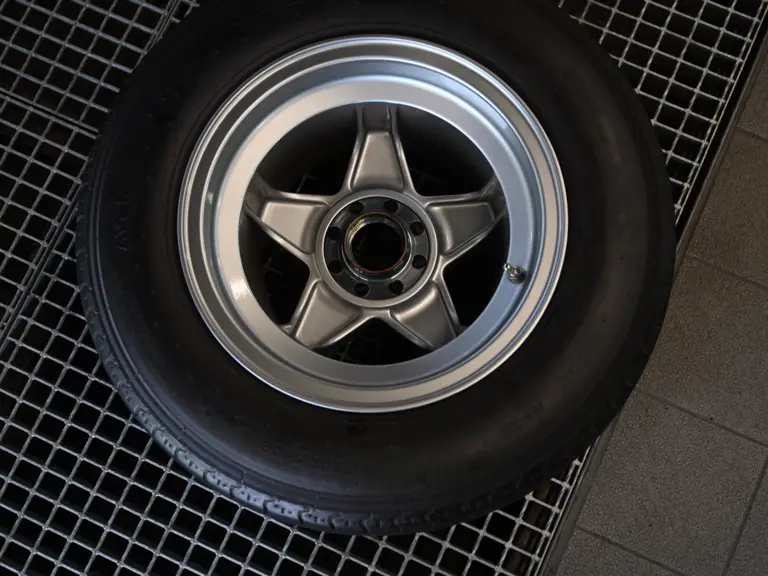
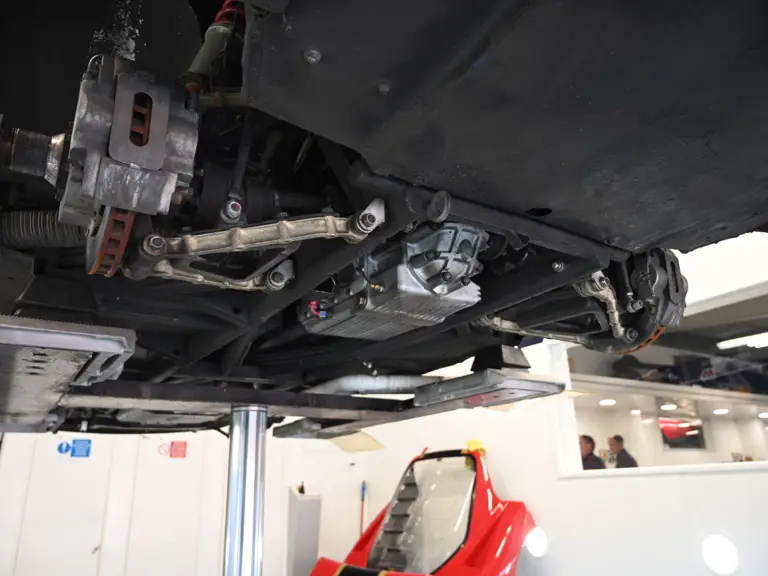
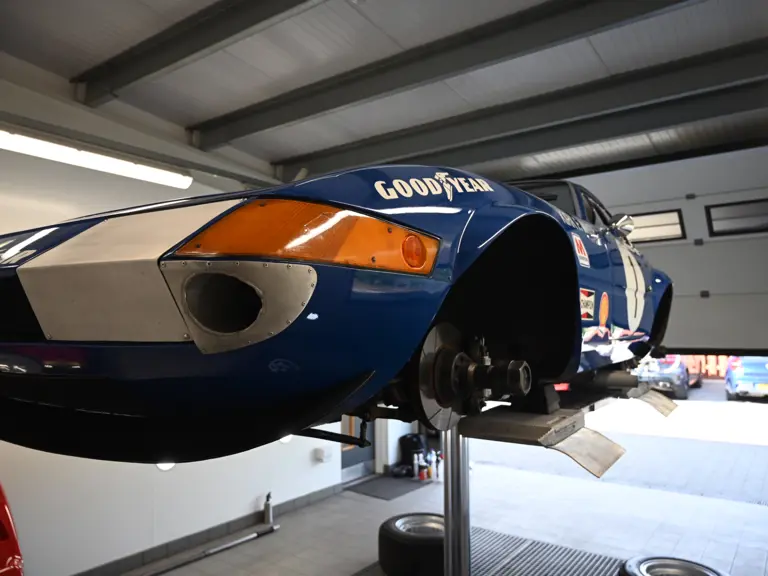
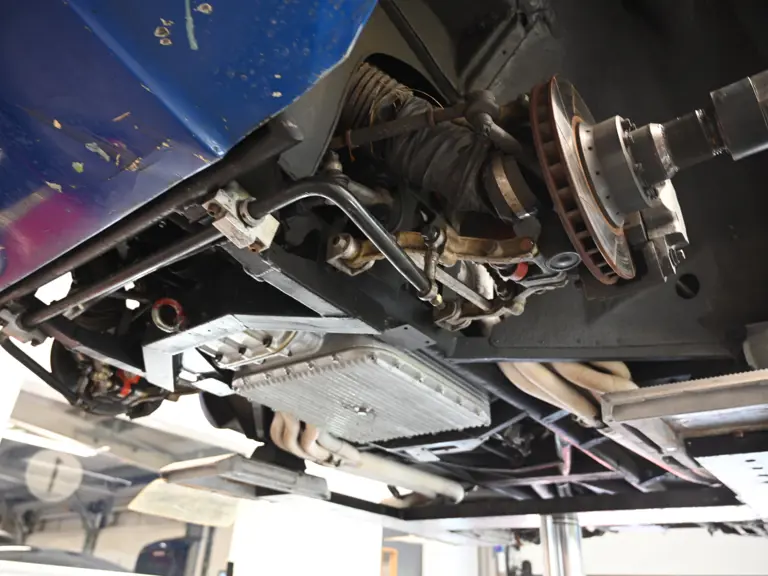
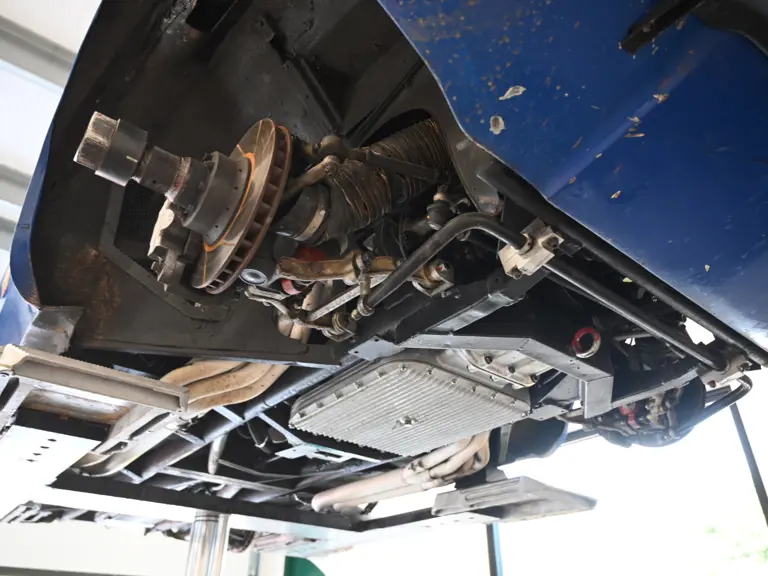
 | Chorleywood, United Kingdom
| Chorleywood, United Kingdom
